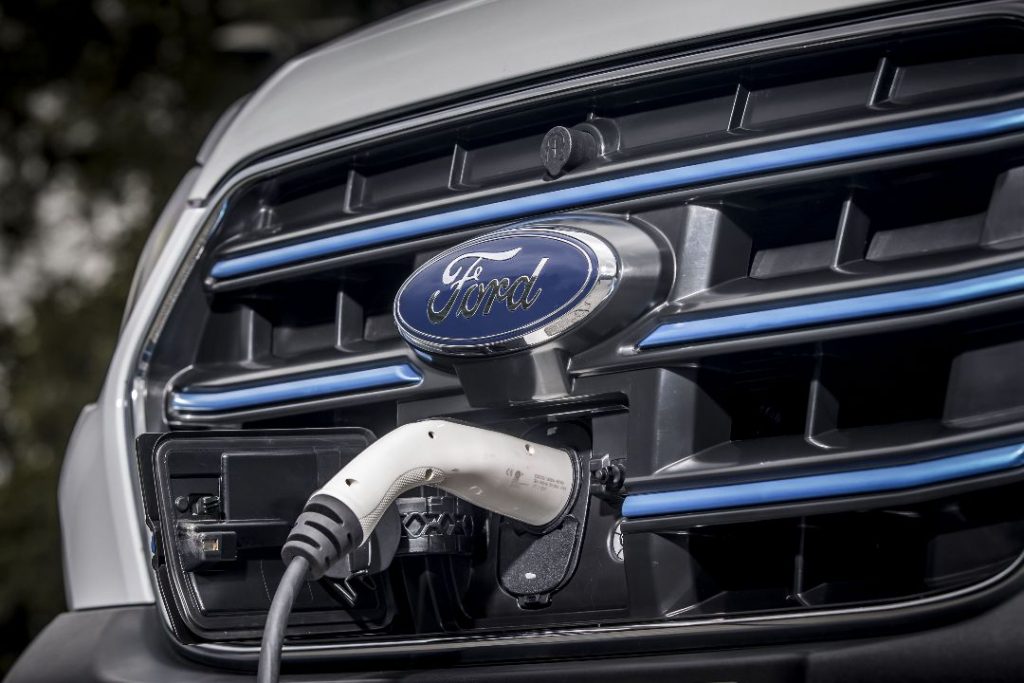Home »
Ford has expanded the range of the E-Transit with the introduction of a brand new 89kWh battery.
The new battery option will increase the Ford E-Transit's range to 402km (250 miles) on the WLTP test cycle.
Charging speeds. have also been improved with AC charge capabilities doubled from 11 kW to 22 kW, and DC fast charging increasing from 115kW to 180kW. That means that using an AC supply, a full overnight charge will take less than six hours while a DC fast charge will see 116 km of driving range added in just 10 minutes and an 10% to 80% charge taking approximately 28 minutes.
Servicing intervals are also increasing for both the new van and the current model with extended two-year/unlimited mileage service intervals - a doubling of the current one-year interval requirement.
A new vapour-injected heat pump will also be standard on the extended range E-Transit van. This will enable the cabin to be heated more efficiently and is a similar to the one used on Ford E-Transit Custom which is designed to improve energy efficiency and optimise range in colder weather.
Ford Pro expects that the increased capability of E-Transit extended range will appeal to customers with a wide range of use cases and requirements.
The new 89kWh battery will be available on E-Transit vans in L3 and L4 lengths as a van, double-cab-in-van and single chassis cab.
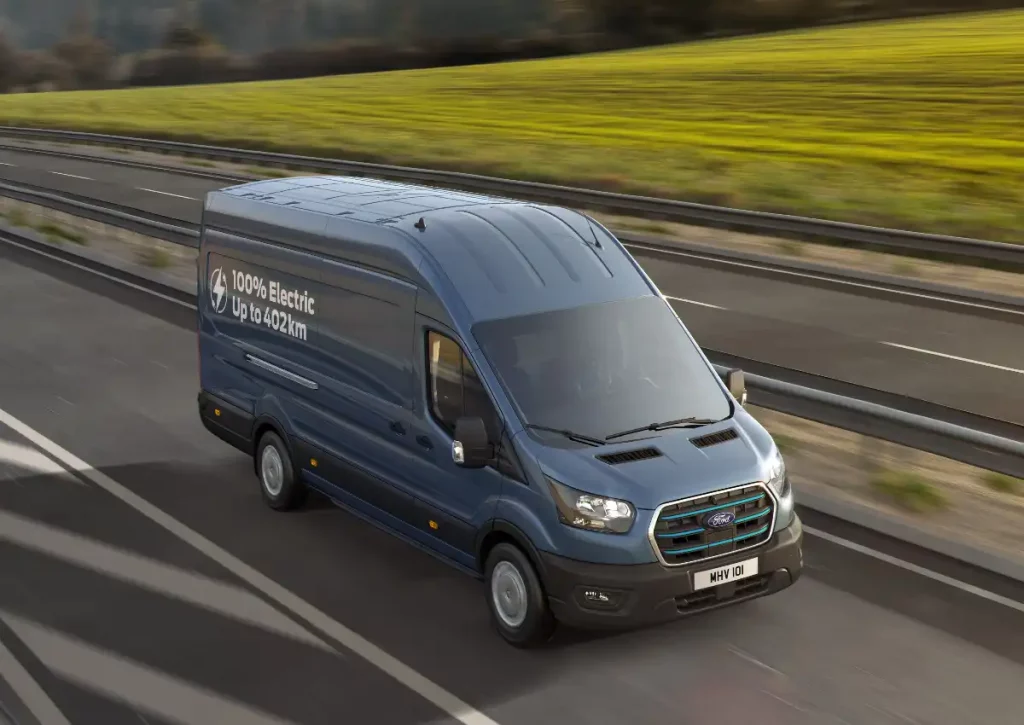
As with the existing E-Transit, GVWs will range from 3,500 kg to 4,250 kg allowing a maximum E-Transit payload of up to 1,460 kg for vans and 1,814 kg for chassis cab variants.
The extended range E-Transit will also. have a towing capacity of up to 750 kg for 3,500kg GVW vans.
“The extended range option for E-Transit is another example of the Ford Pro commitment to making high-productivity electric fleets a reality across Europe,” said Hans Schep, general manager, Ford Pro, Europe.
“Giving customers the option to drive further between charges alongside a wide choice of body styles and support from Ford Pro’s connected ecosystem strengthens our position as their trusted partner for complete fleet solutions," Schep added.
Ford Pro will also offer the E-Transit with a new factory-supported electric minibus conversion from Turkish converter ISRI.
Designed for taxi firms, schools and local authorities, the new E-Transit minibus will be able to seat up to 15 people and is based on an E-Transit L3 window van. Plated at 4,250 kg GVW, it can be specified with a single or double front passenger seat, and with a nine- or 12-seat rear layout. It's also available in either a standard or high height. Air conditioning, rear cabin heating and a powered side step are all standard. on the new E-Transit Minibus.
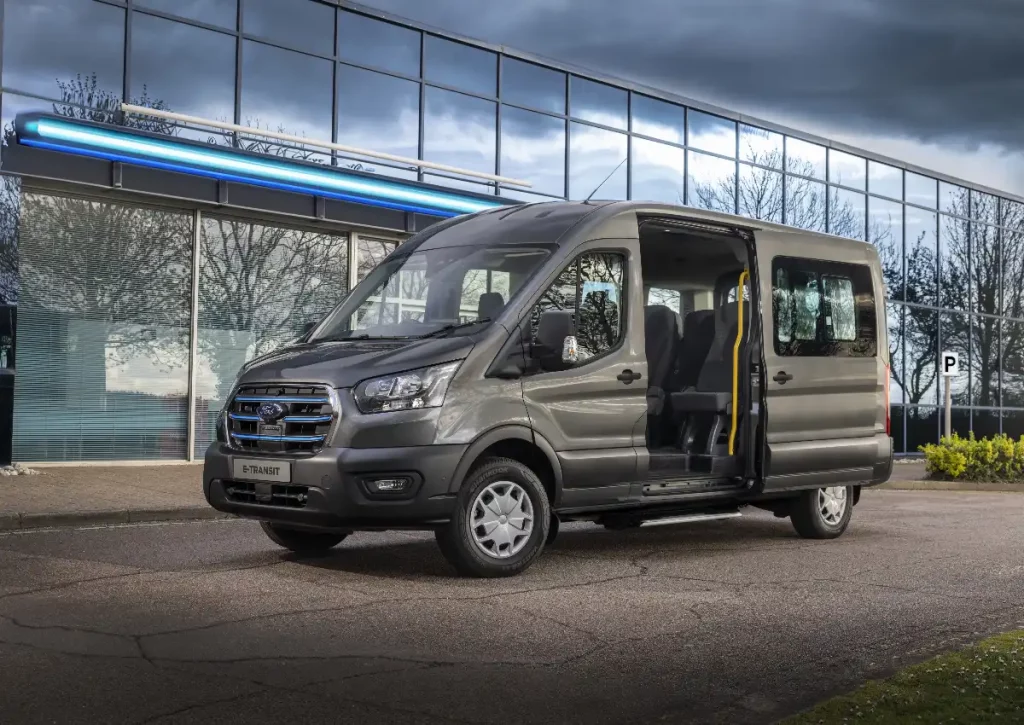
Production of commercial vehicles in the UK declined by 2.9% in the first half of the year according to the SMMT
Nissan Townstar and Nissan Primastar get Gold ratings in latest EuroNCAP Commercial Van Safety ratings test
Electric van sales remain the same as 2023 figures as the overall market for LCVs increases to highes levels post-pandemic
Ford Pro in Europe has announced changed to the Ford Transit and Ford E-Transit due to go into production in 2024. The enhancements include improved connectivity features, wireless software updates, simplified aftermarket conversions, and automation of repetitive tasks for delivery drivers.
There are also chassis improvements and the addition of an eight-speed automatic transmission for front-wheel-drive models that will boost payload capacity, improve vehicle performance, handling, and efficiency.
The new technology features include the SYNC 4 communication and information system, supported by a 12-inch touchscreen and an 8-inch digital instrument cluster for a driver-focused cab experience. The system also includes Connected Navigation for real-time traffic information to assist drivers in planning routes and staying on schedule. The Ford Transit will also be equipped with Ford's latest 5G modem, providing fast connectivity for smart technologies and enabling wireless updates through the Ford Power-Up system.
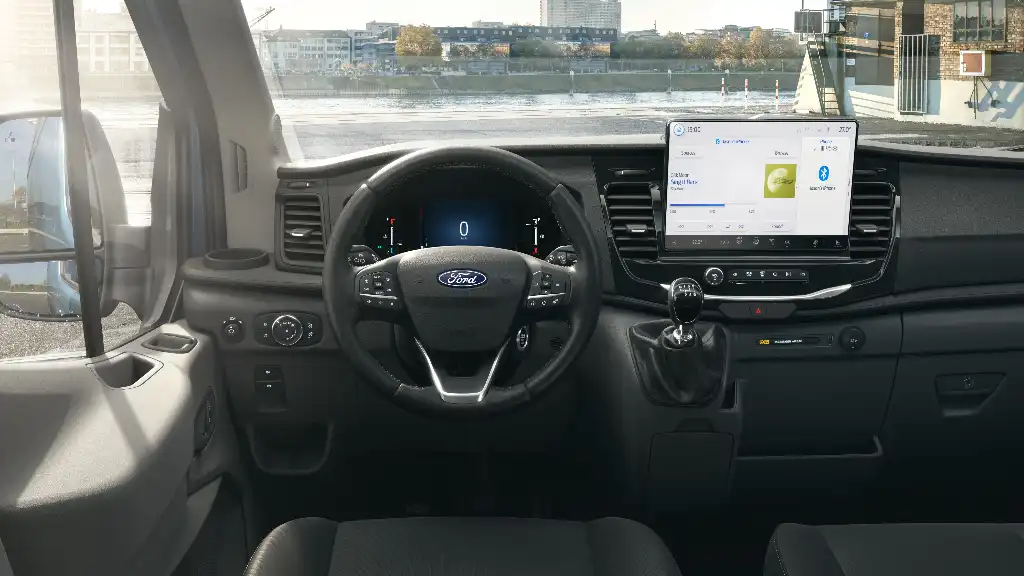
Additionally, the 2024 Transit models will introduce Delivery Assist technology, available on long wheelbase panel van E-Transit and Transit models with automatic transmission. This feature automates repetitive security tasks for delivery drivers, saving time and enhancing efficiency. The system automatically stops the engine, activates hazard warning lights and alarms, locks doors not in use, and restarts the engine when the brake pedal is pressed.
The Ford Pro Upfit Integration System allows drivers to control aftermarket installed equipment via digital buttons on the in-cab touchscreen. It also integrates with Ford Pro software packages for remote monitoring, enabling features such as temperature tracking in refrigerated vehicles.
In terms of safety, the 2024 Transit models will come with a comprehensive suite of advanced driver assistance systems as standard, including Pre-Collision Assist with Autonomous Emergency Braking, Lane Keeping Alert & Aid, and Intelligent Speed Assist. Optional driver assistance packs offer additional features such as Blind Spot Information System, Intelligent Adaptive Cruise Control, and Auto Park Assist with a 360-degree camera.
The 2024 model will introduce a new eight-speed automatic transmission option for front-wheel drive Transits, improving performance, efficiency, and load-hauling capability. The new transmission enables a higher Gross Vehicle Mass (GVM) of up to 4,250kg and Gross Train Mass (GTM) of up to 6,000kg, providing increased capacity for payloads.
Furthermore, the 2024 Transit models will feature new wheel hub and brake systems, reducing weight and making brake replacements quicker and easier. New 16-inch wheels will become standard across the model.
Ford Pro expects the upgrades to enhance conversion potential and save time and effort for operators. The new heavy-duty Gross Axle Weight Rating pack, available for front-wheel drive models, will increase the front axle maximum weight, particularly benefiting applications such as horseboxes or low loaders that require high payloads and easy access to the load area.
The latest Transit and E-Transit models will be available for customer order later this month, with production starting next year and deliveries expected from summer 2024.
Ford is leading a research project to investigate the potential for a hydrogen E-Transit as an onboard energy source for its Ford E-Transit van, with the aim of establishing whether fuel cell technology can provide greater zero-emission range to heavy-use customers who travel high mileages with maximum loads, ancillary equipment such as chillers, and limited charging opportunities in their working shift.
The project is part-funded by the Advanced Propulsion Centre (APC) and involves a consortium of six automotive technology leader and fleet operator partners who will help to determine the supporting hydrogen refuelling infrastructure required.
The project will also expand Ford Pro's conversion expertise, with engineers and E-Transit specialists from Dagenham and the company's nearby Dunton Technical Centre in Essex providing support. The project will validate the vehicle's business case by linking Ford's expertise as a 57-year UK van market leader with fuel cell powertrain experts and fleet operators including Ocado Retail.
Other partners on the project are bp, capturing hydrogen usage and infrastructure requirements; Cambustion, testing the fuel cell system; Viritech, designing hydrogen storage systems; and Cygnet Texkimp, providing the pressure vessels’ carbon fibre tooling.
Tim Slatter, chair of Ford in Britain, said: “Ford believes that the primary application of fuel cells could be in its largest, heaviest CVs to ensure they are emission-free, while satisfying the high daily energy requirements our customers demand.
“Ford has an unmatched history in the commercial vehicle sector with the indomitable Transit, and we are excited to be exploring new ways to make clean deliveries an option for even our hardest working vans on the road.”
A low-volume test fleet of eight hydrogen fuel cell Ford E-Transit vans will run for six-month periods over the three-year project to 2025. Test fleet data will provide insights into the total cost of owning and operating a large van, with increased range and operating hours to match its diesel-powered equivalent and without the need to charge.
The prototype Ford E-Transits will be fitted with a high-power fuel cell stack, in conjunction with significant hydrogen storage capability, optimised for safety, capacity, cost, and weight. An important project element will evaluate efficient and viable recycling for end-of-life components

Ford Pro has notched up an impressive eighth successive year as market leader in Europe.
Ford recorded its highest-ever overall market share of 15% beating Renault into second position with a 14.4% market share. Ford also increased its share year-over-year in a total of eleven countries. These included Britain - where the Ford Transit Custom van was also the most popular of all vehicles - Germany, France, Italy, Spain, Greece, Ireland, Portugal, Romania, Sweden and Turkey.
“Setting a new record of eight consecutive years of European market leadership demonstrates how much our commercial customers rely on Ford’s vans and pickups to deliver for their business. As we roll out our unique platform of software, charging and services across Europe, we are determined to ensure Ford Pro remains our customers’ trusted partner for productivity,” said Hans Schep, general manager, Ford Pro, Europe.
The growth comes as Ford looks to revitalise its line-up as it prepares for electrification. The large electric Ford E-Transit is now available in all markets after its launch earlier in 2022, while details of the upcoming Ford E-Transit Custom and new Transit Custom PHEV were revealed at the Hannover IAA trade show.
Ford Pro also unveiled its integrated platform of software, charging, servicing and financing, purpose-built to accelerate the productivity and sustainability of businesses of all sizes across Europe.
Rounding off the year, Ford also unveiled the new Ford Ranger and Ford Ranger Raptor pick-up trucks. The pick-up truck platform will also be used by Volkswagen for their re-entry in the pick-up truck market with the new Volkswagen Amarok. Unsurprisingly, the Ford Ranger also marked an eighth successive years as Europe’s most popular pickup truck.
Ford Pro was Europe's commercial vehicle sales leader in 2022, marking an eighth successive year of market leadership for Ford and a new record in the industry.
The Ford Transit Custom was the best-selling one-tonne van in Europe and the best selling vehicle in the UK in 2022.
Ford's market leadership in Britain is currently 57 consecutive years.
The all-electric successor of the Transit Custom van is the E-Transit Custom, which is arriving in late 2023.
Ford Pro's new product launched in spring 2022 was the all-electric E-Transit van, which has led European monthly sales of the two-tonne EV van segment since June last year and attracted over 1,750 UK orders. They also announced a new Ford Ranger pick-up and a successor to the Ford Transit Custom PHEV.
Ford Pro is the name for the commercial vehicle division of Ford and it unveiled its integrated platform of software, charging, servicing, and financing, purpose-built to accelerate the productivity and sustainability of businesses of all sizes across Europe.
Ford gave the first public airing of next year’s Ford E-Transit Custom along with details of the next-generation Transit Custom range which will include PHEV and new EcoBlue diesel vans.
The Ford E-Transit Custom will have a 380km range and support 125 kW fast charging, while the new Custom PHEV uses a similar powertrain to the Kuga PHEV with a 2.5-litre petrol engine combined with a 11.8kWh battery to give 57km of electric-only range.
New Transit Custom diesel engines will range from 108hp to 167hp with a new 8-speed auto gearbox joining the range along with an all-wheel-drive option. All next-generation Transit Custom vans will get the Ford Pro range of software and connected service which include Ford Pro Telematics.
Like its larger sibling, the Ford E-Transit, the Ford E-Transit Custom will be built in Turkey.
Ford also announced plans for its new Ford Pro Upfit Integration System an interface module that establishes a direct connection to the electrical system allowing conversions to be controlled via the 13-inch SYNC 4 touchscreen rather than though bolt-on switchgear. It is hoped that this will speed up the delivery time of conversions as well as improving reliability as converters won’t have to modify the cab area or splice into factory wiring.
Speaking about the new Transit Custom PHEV, Ford Pro CEO, Ted Cannis said: “Not all of Europe was ready with the charging infrastructure or facilities to go completely electric. In Eastern Europe, Southern Europe, there are places where it's not a solution yet because it's just not available.
"If you have dense urban zones, still where you don't have the infrastructure in place, the plug in hybrid allows you to enter the city, like in London, and then you can go out and do a lot of distance. I think getting this bridge to full electrification in the near term, you have to have those decisions that's why to lead the market from end-to-end in Europe we really thought we needed the whole gamut during this period of transition.”
Ford has created its fourth and most powerful SuperVan to date, the Ford Pro Electric SuperVan. The new SuperVan has a staggering 2000hp from four electric motors to give it a 0-62mph time of less than 2 seconds and a top speed of more than 185mph.
It uses parts from the upcoming Ford E-Transit Custom and has been fully connected using the recently launched Ford Pro tool kit. That will allow real-time data from the SuperVan to be uploaded to the Ford Pro cloud and analysed by fleet managers or would-be race directors.
Four electric motors, one in each wheel, are powered by a 50 kWh liquid-cooled battery. It uses a bespoke control system to produce a combined 2000hp.
Read our electric van reviews
The Electric SuperVan also gets a purpose-built, track-ready chassis steel with a steel spaceframe and lightweight composite body panels. Under the skin there is unequal-length double wishbone suspension at each corner with motorsport-grade front and rear subframes, uprights, and brakes.
Unusually for an electric van, it has a two-speed gearbox with a very short first ratio to ensure maximum gearing to get the best possible acceleration.
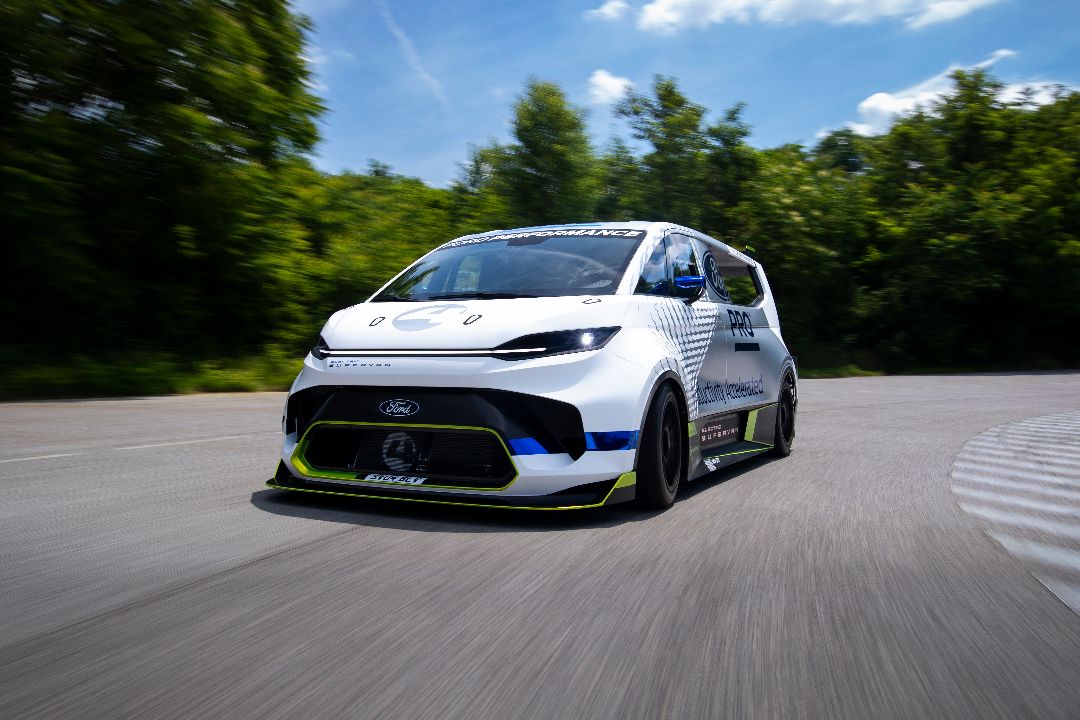
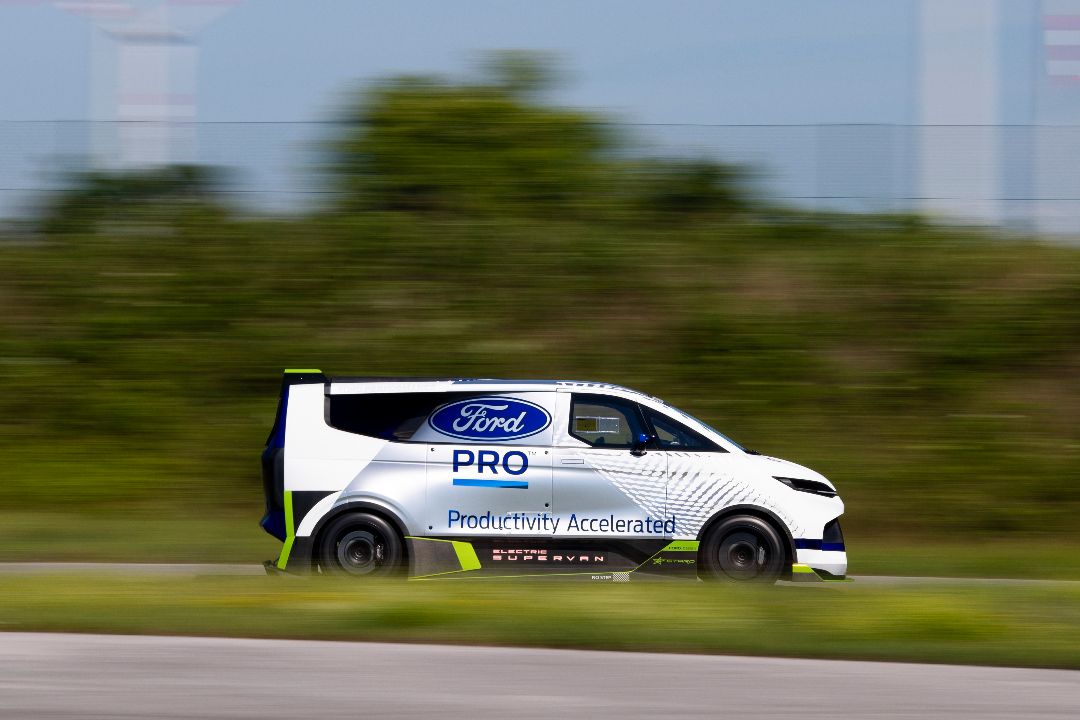
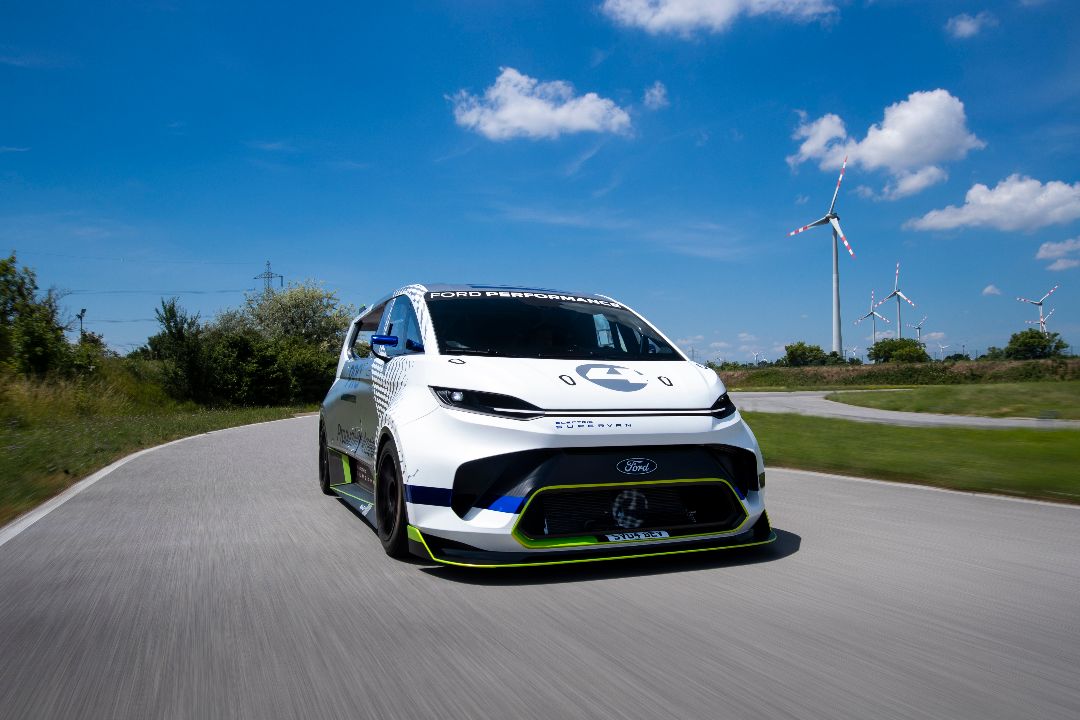
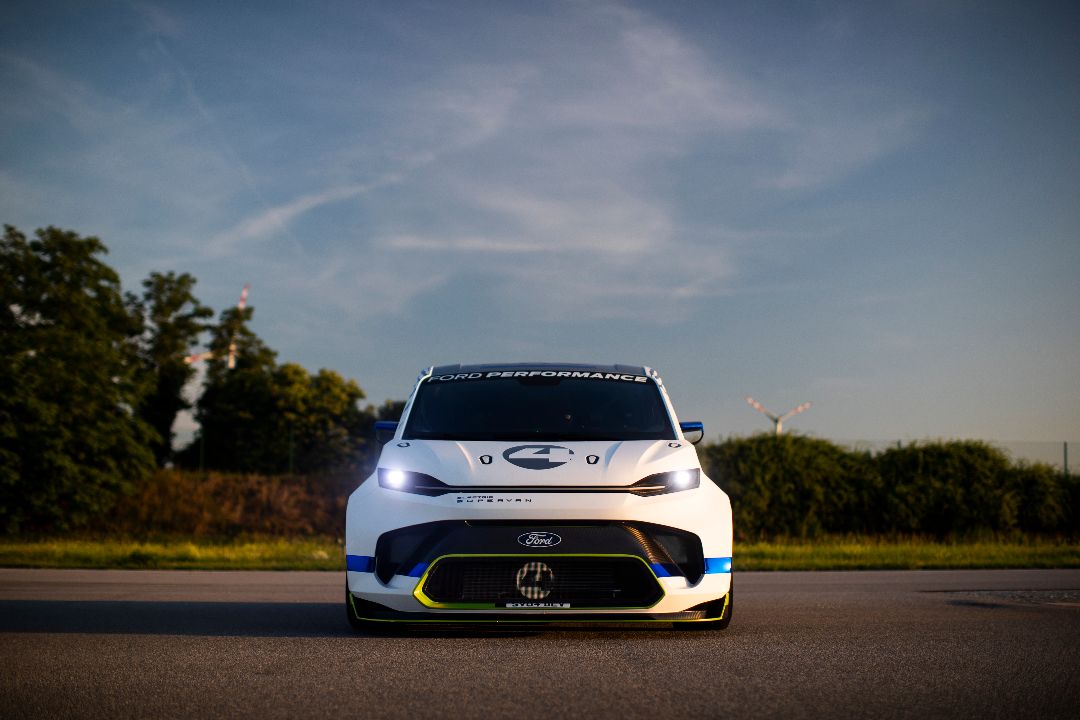
As it is a connected van, the new SuperVan 4 gets a host of onboard cameras that can be broadcast to its audience, with the driver also able to pull camera feed into the on-board Sync 4 screen which is a carry-over from the new Ford E-Transit and the E-Transit Custom.
Despite its massive aero wing rear diffuser, front splitter and side skirts, not to mention its staggering performance, the Electric SuperVan is still a commercial vehicle and has a loadspace! There's a side door for loading and unloading and Ford is said to be developing a secure electromagnetic release system which can be controlled via the SYNC screen.
The Electric SuperVan’s interior gets a full roll cage as well as FIA approved racing seats. Not going to the racetrack? SuperVan can use the Sync 4 system as a normal sat nav or to find a charger, connect to WiFi and make phone calls. But the touchscreen also lets you control the selectable drive modes. They have been tailored to the Electric SuperVan’s torque maps and regenerative braking to give five very different driving modes.
Road – for rare cases of “normal” driving
Track – for balancing speed and cornering on track with racing slick tyres
Drag – for maximum acceleration on drag strips
Drift – for spectacular drifting, agility demonstrations and snow driving
Rally – for optimum performance on tarmac and gravel rally stages with special tyres
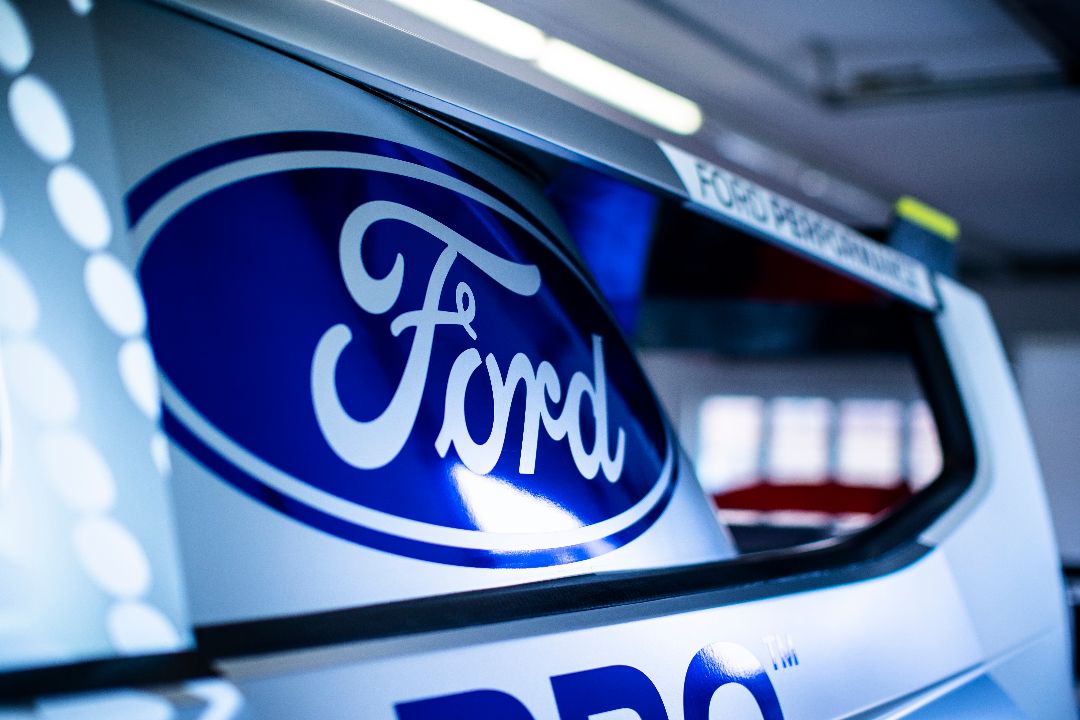
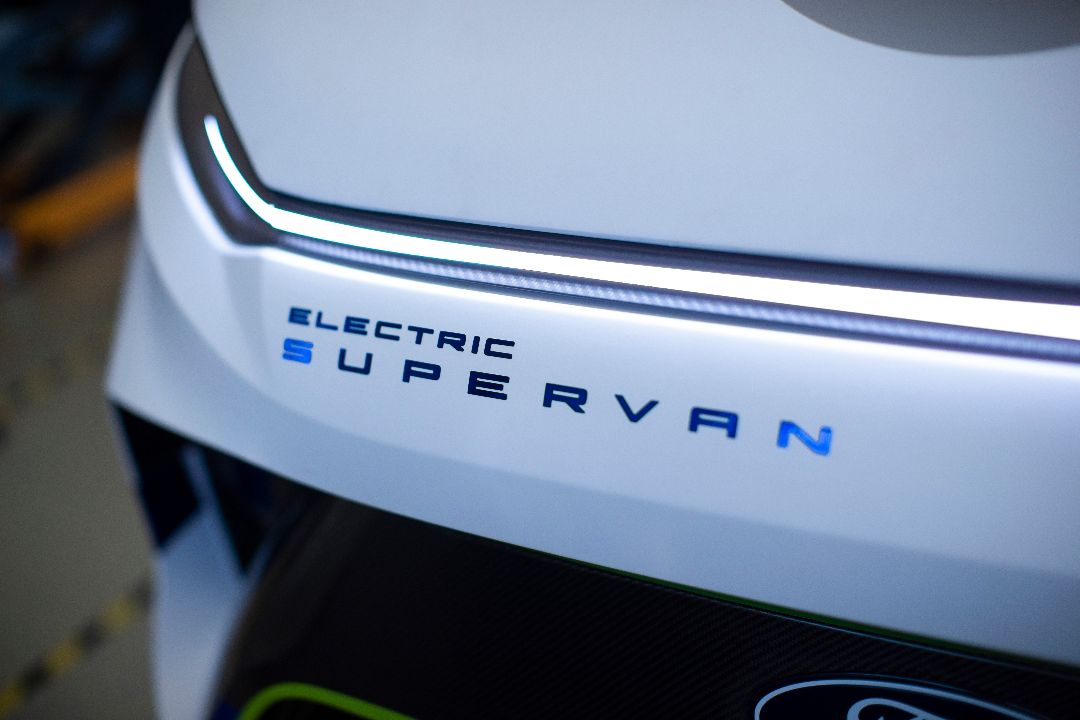
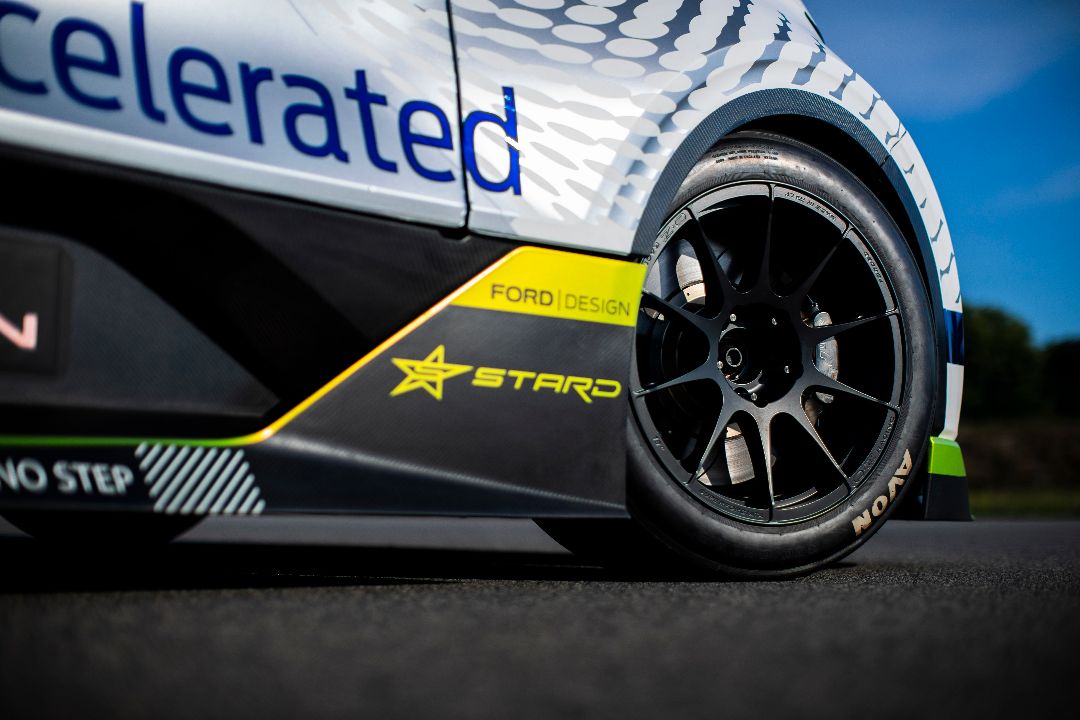
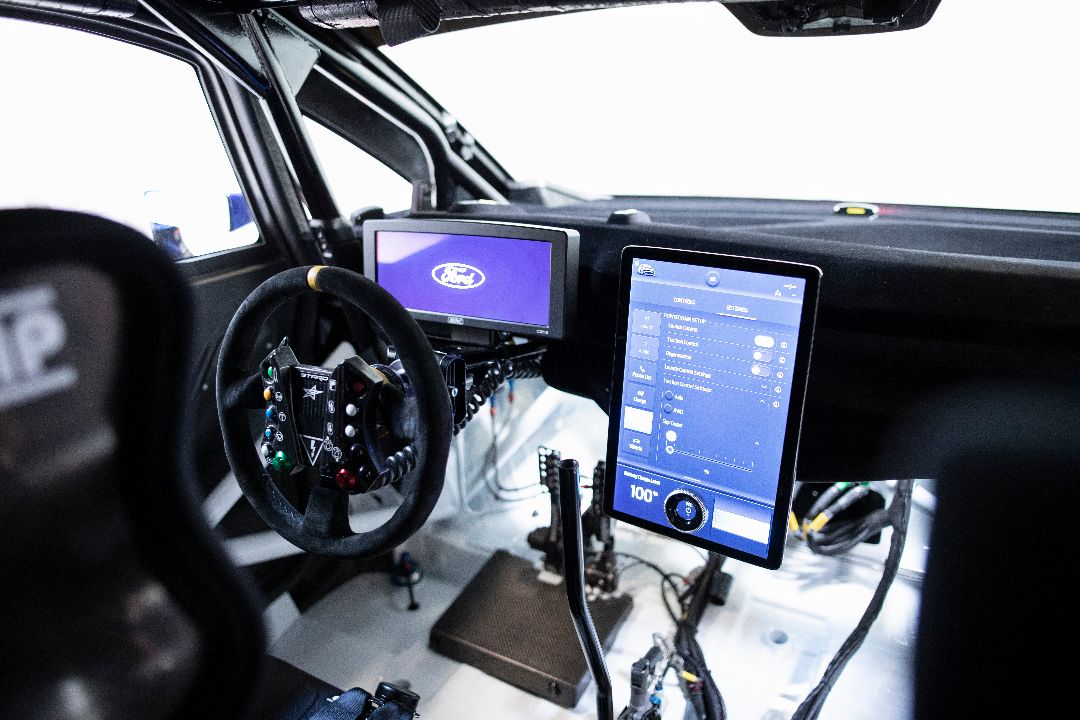
Built by Ford Performance and motorsport experts STARD, the SuperVan’s cutaways and dorsal fin help to push air onto the rear wing. This will generate downforce and keep the Electric SuperVan on the track.
Other electronic features include launch control, a pit-lane speed limiter and three-stage regenerative braking. The braking is similar to the L Mode function on E-Transit van. At low speed, Eco Mode keeps the motors at their optimal efficiency and turns the regenerative braking up to max. It also disengages drive to the rear axle. At the other end of the scale there’s an E-Boost button which gives a temporary power and torque boost.
Perhaps the maddest digital decision is the inclusion of something which Ford are calling a Tyre Cleaning Mode. This they say “can deliver exhilarating driving displays”. That's because it allows you to fully brake one axle while spinning the other. That should mean some impressive burnouts on the front or rear axles. Which of course would only be every used appropriate to help clean and warm the tyres before performance runs…. Yeah right!
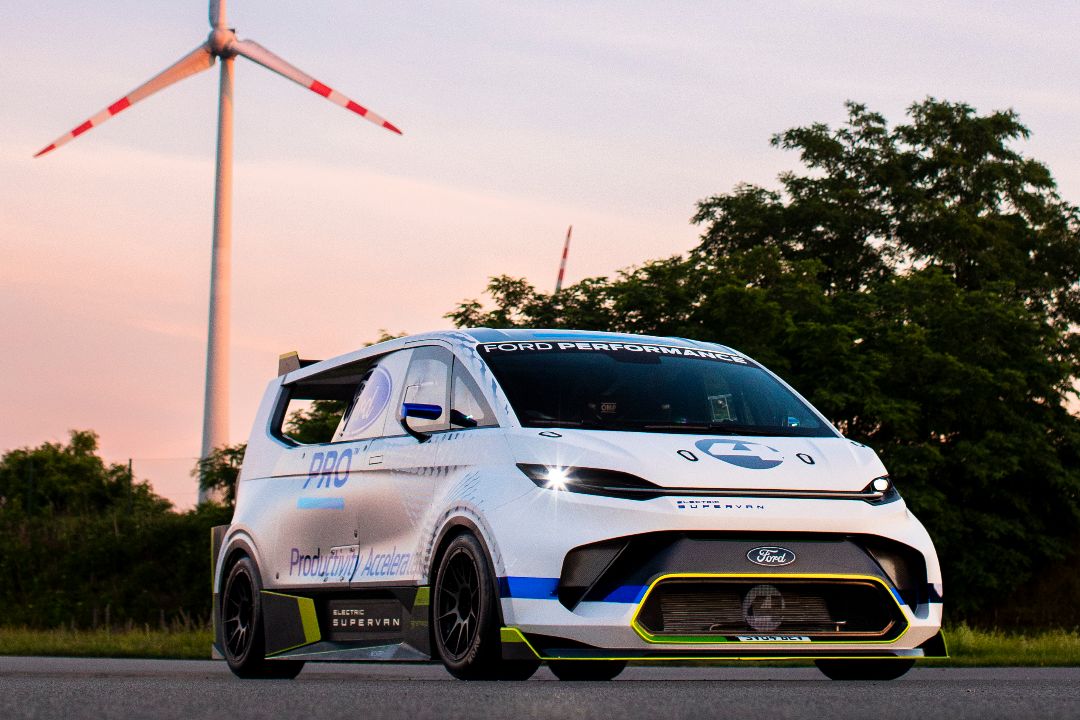
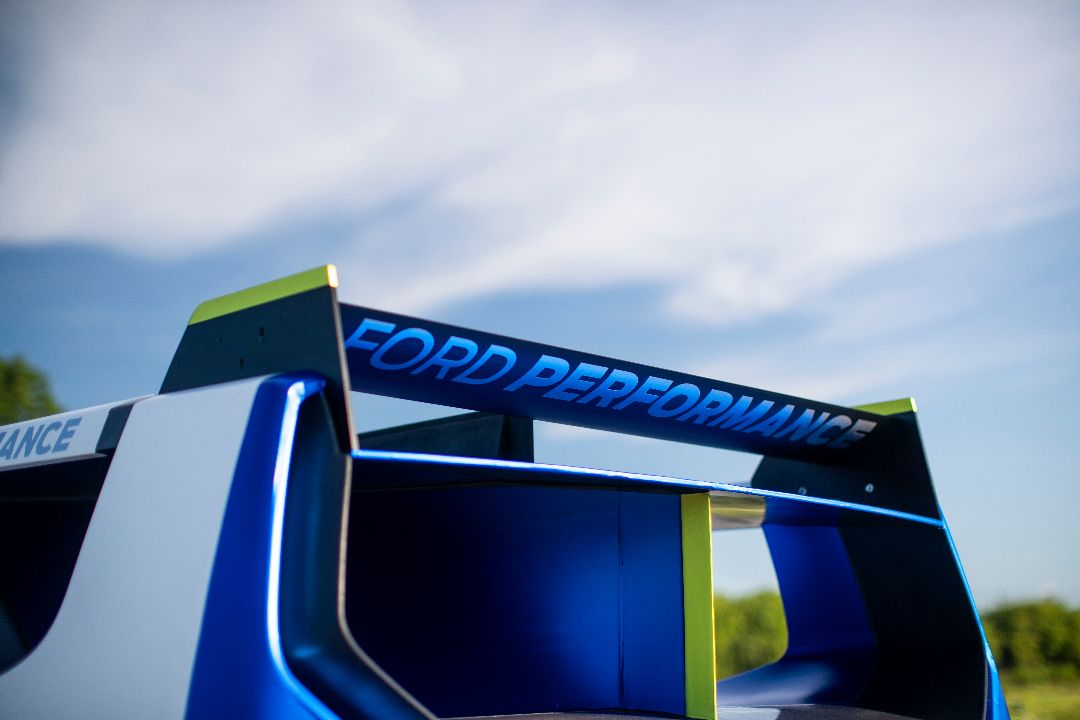
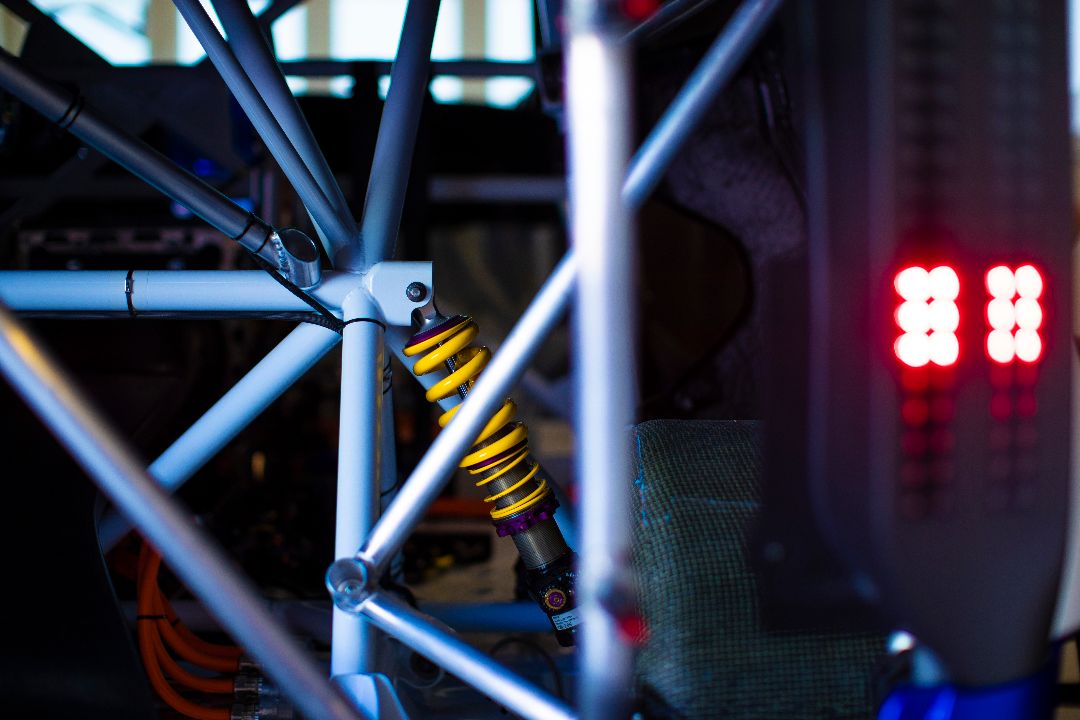
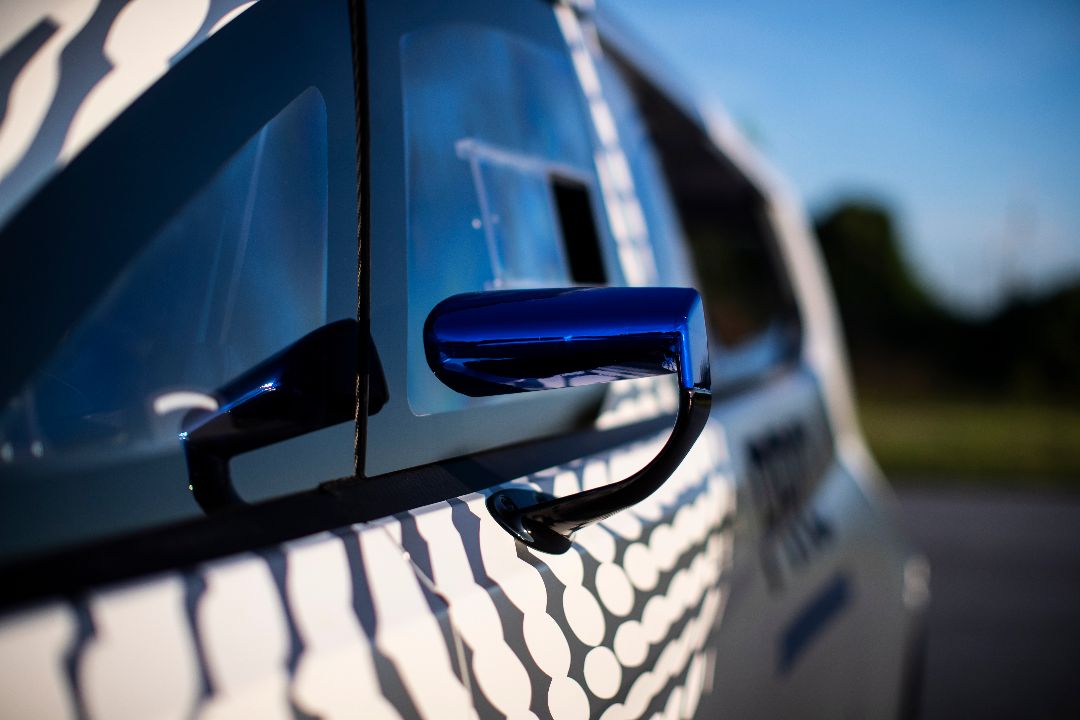
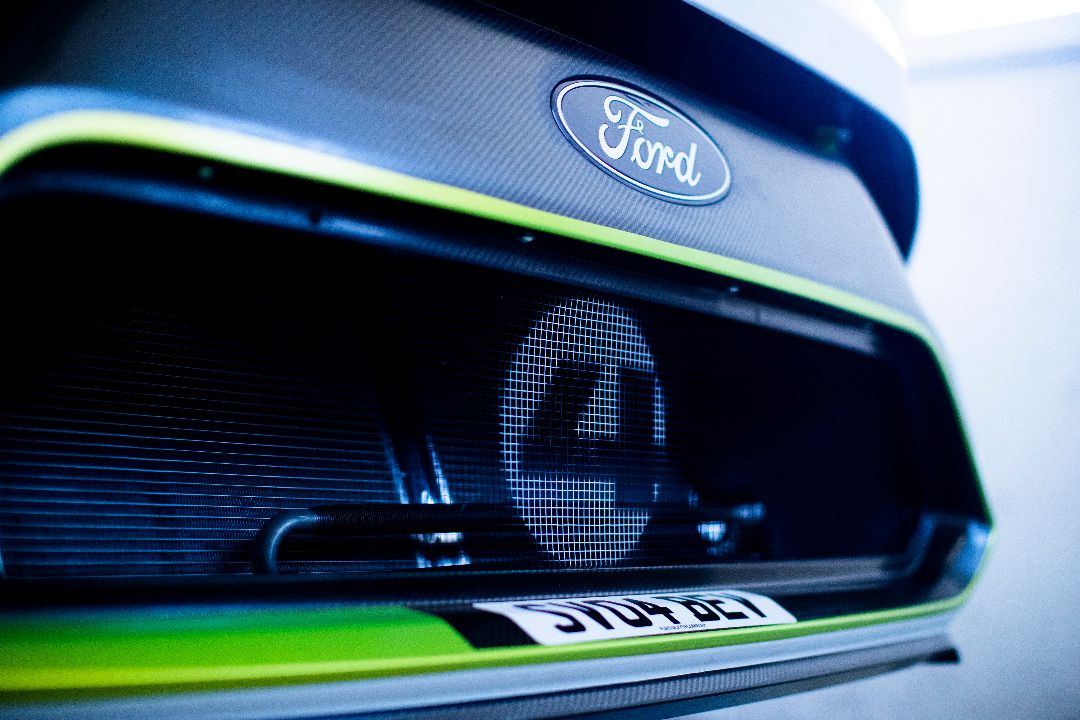
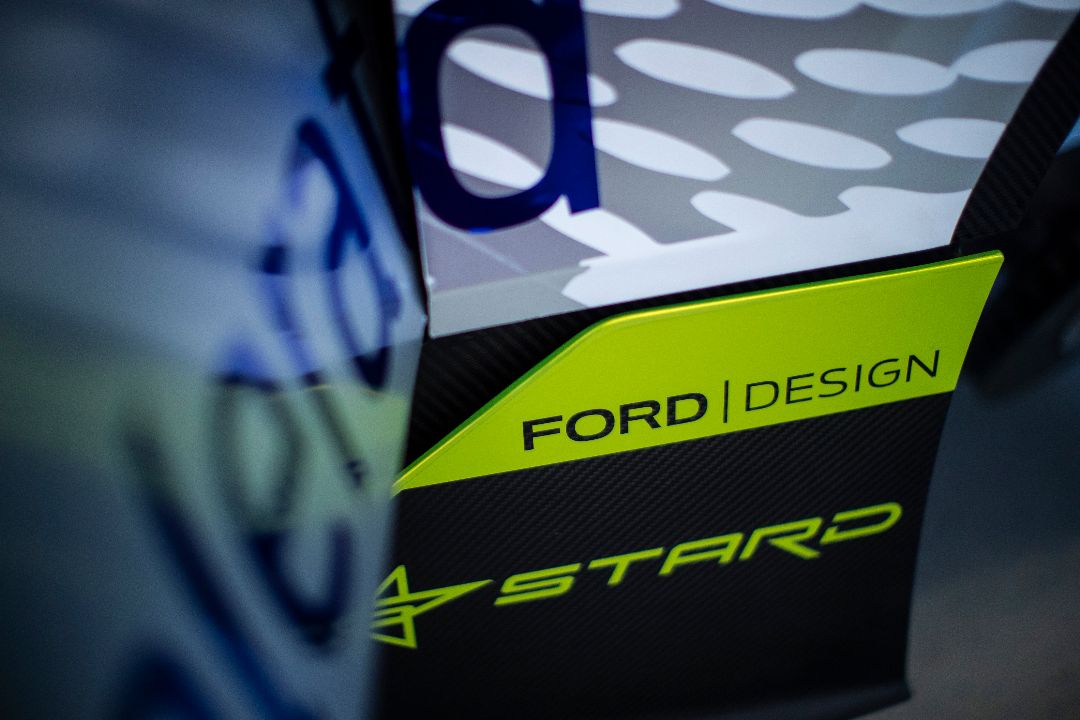
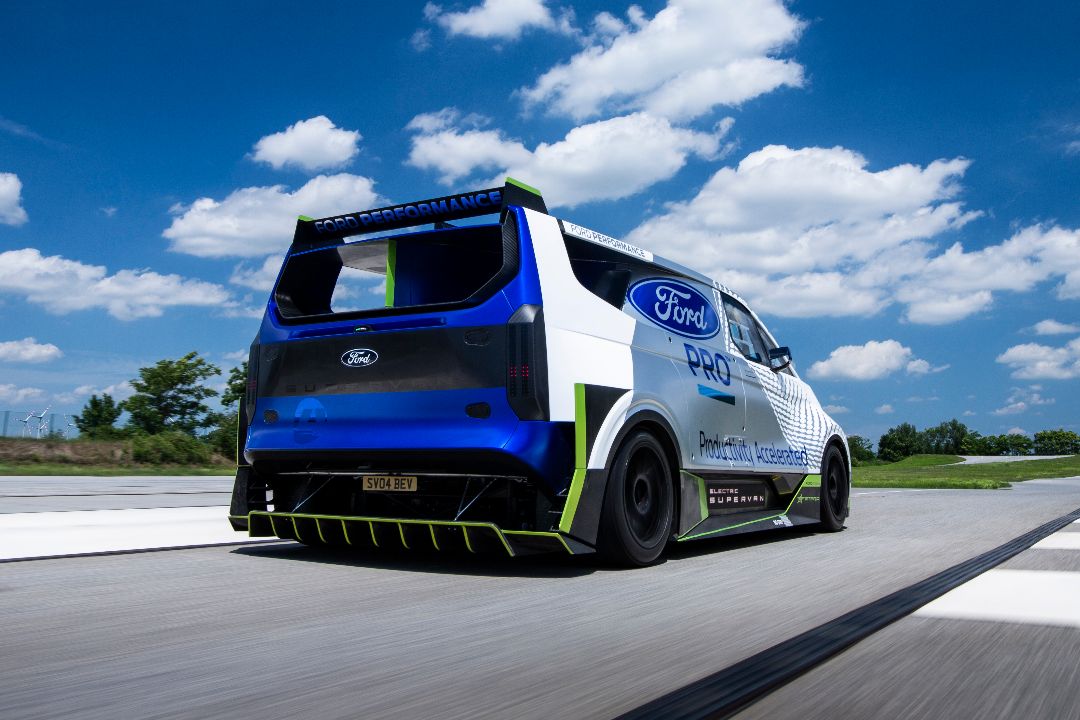
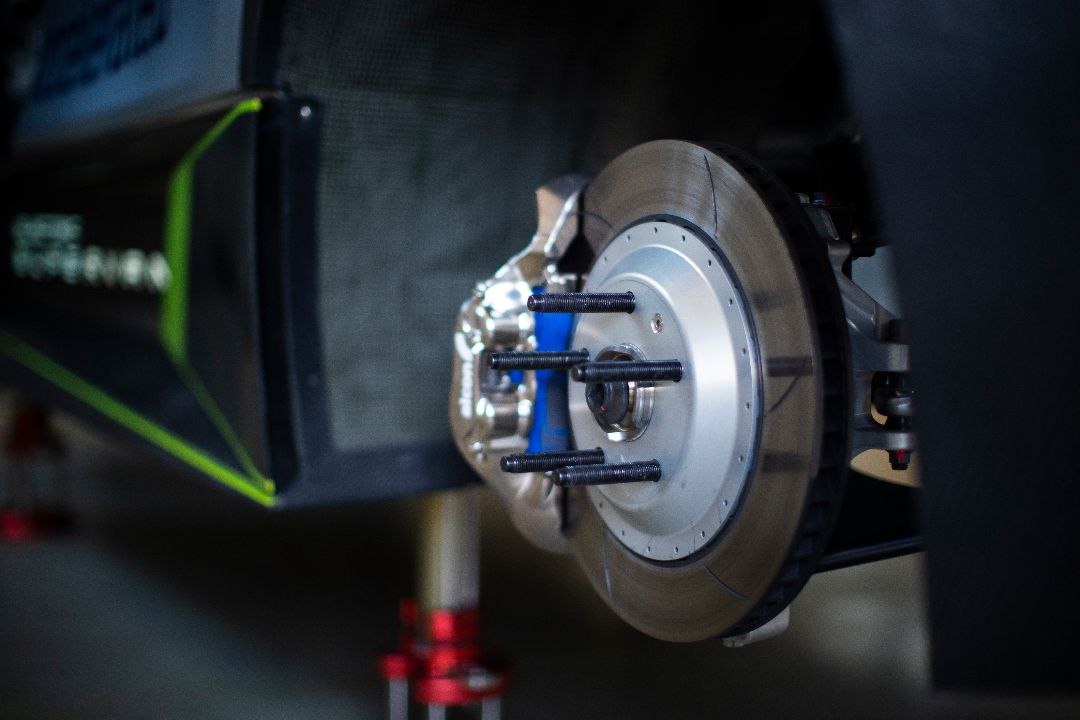
Ford’s first SuperVan was revealed in 1971 with a mid-mounted engine from the Le Mans-winning Ford GT40. It was based on the Transit Mk1. SuperVan 2 followed shortly after with a glassfibre version of the Transit Mk2 body. It had a 590 PS Cosworth V8 put under the bonnet. SuperVan returned for a third time as the facelifted Transit Mk3. Power came from a 650 PS Cosworth HB engine shared with Formula 1 cars of the era.
The Electric SuperVan will be making its debut at the Goodwood Festival of Speed. The driver will be Romain Dumas, a multiple record holder at Goodwood, Pikes Peak and the Nurburgring.
Also going up the famous hill climb will be the new Ford Ranger Raptor with its V6 petrol engine.
Needless to say, the SuperVan is a one-off and won't be going on sale! But it does demonstrate the capabilites of Ford's electric vans as in between runs, the Ford Electric SuperVan will only need 45 minutes to full recharge using a standard fast charger. Electric motorsport has never looked so good.
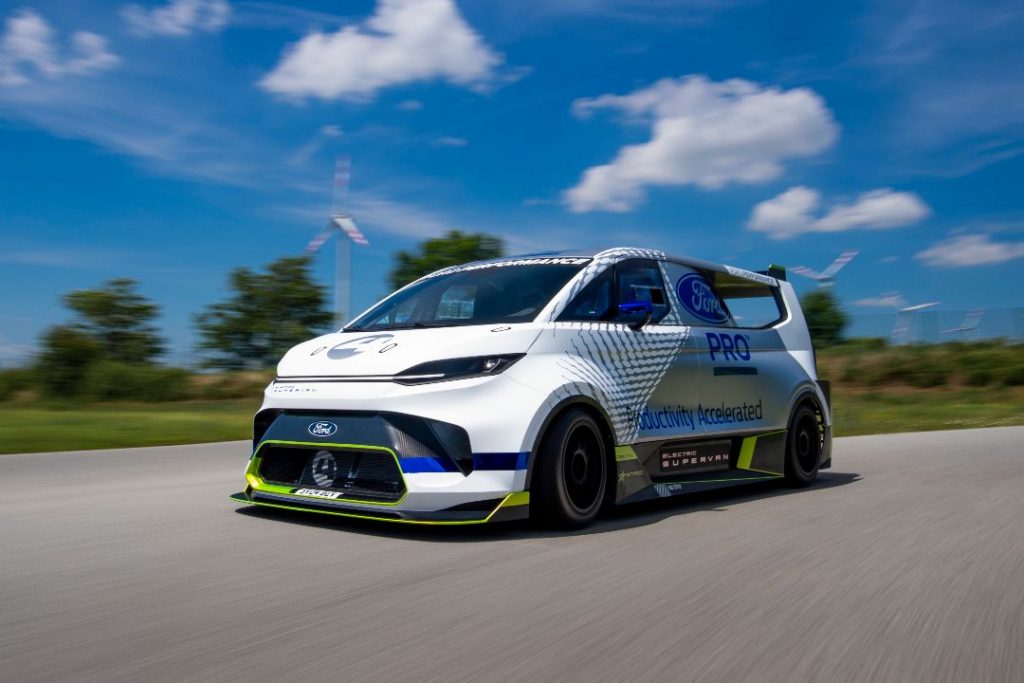
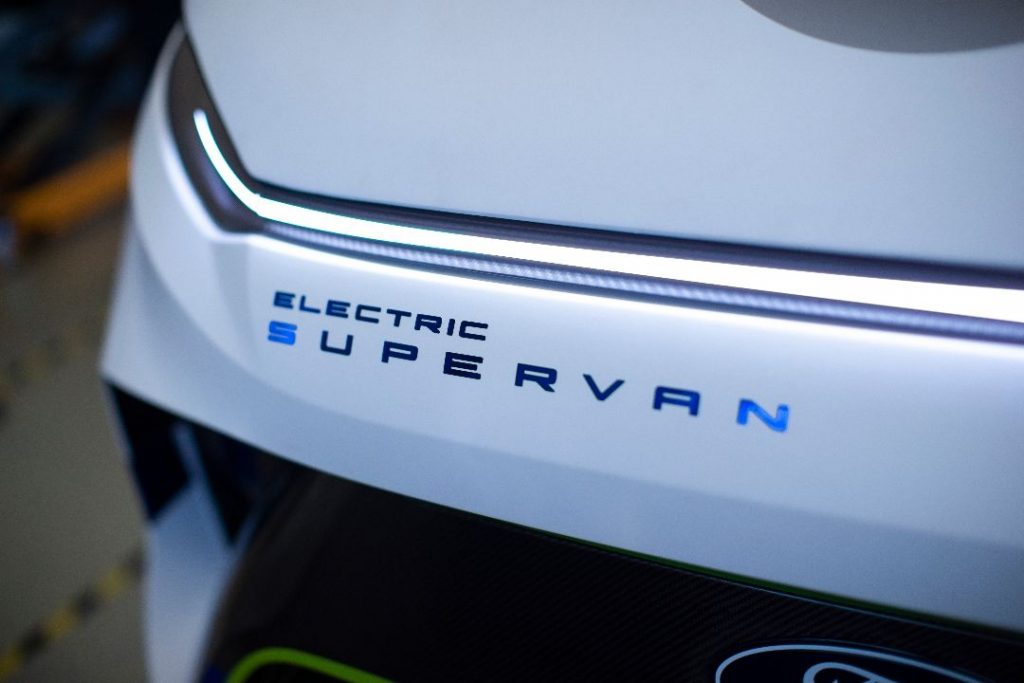
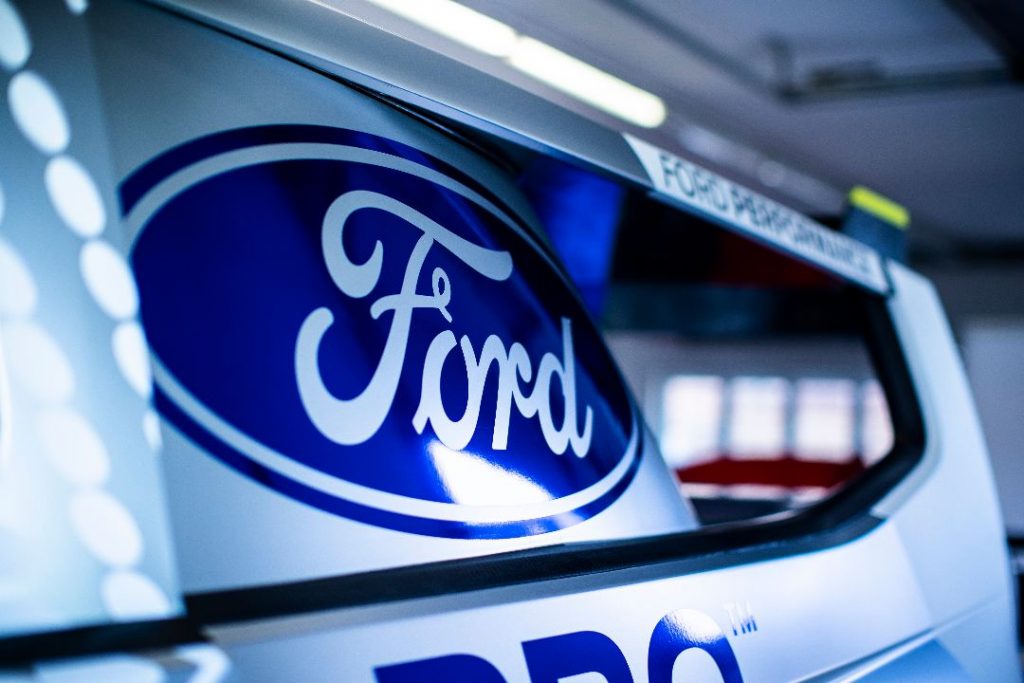
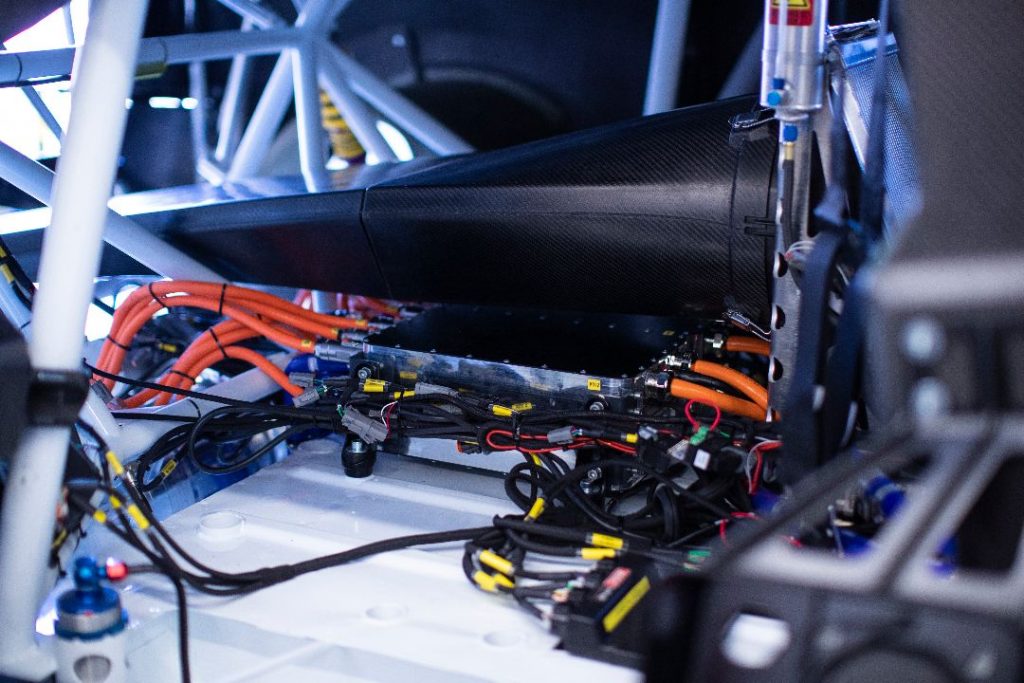
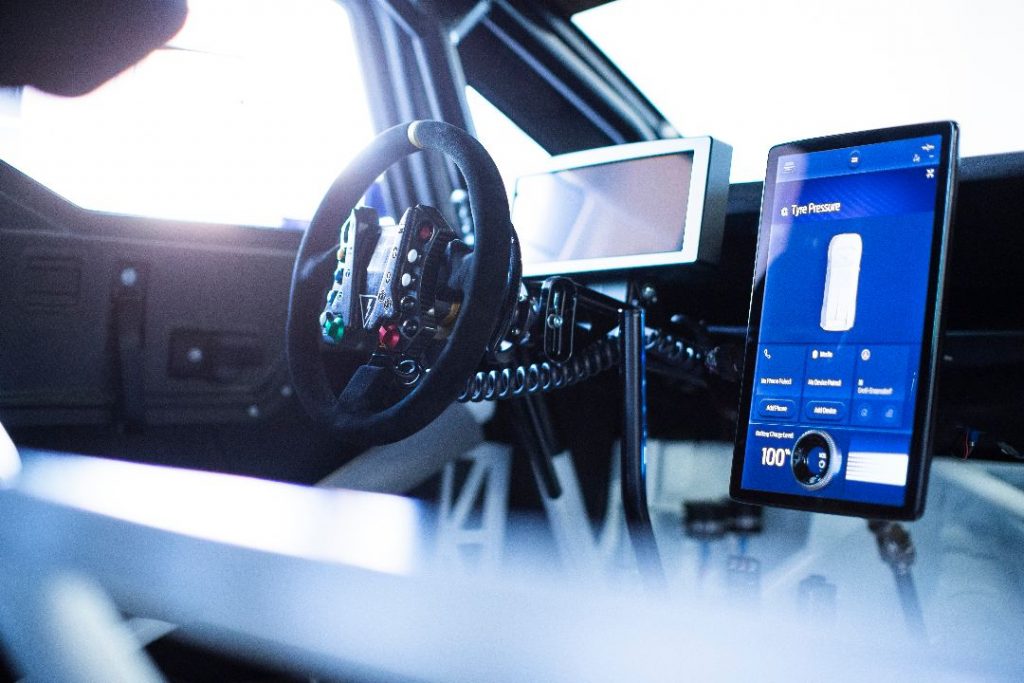
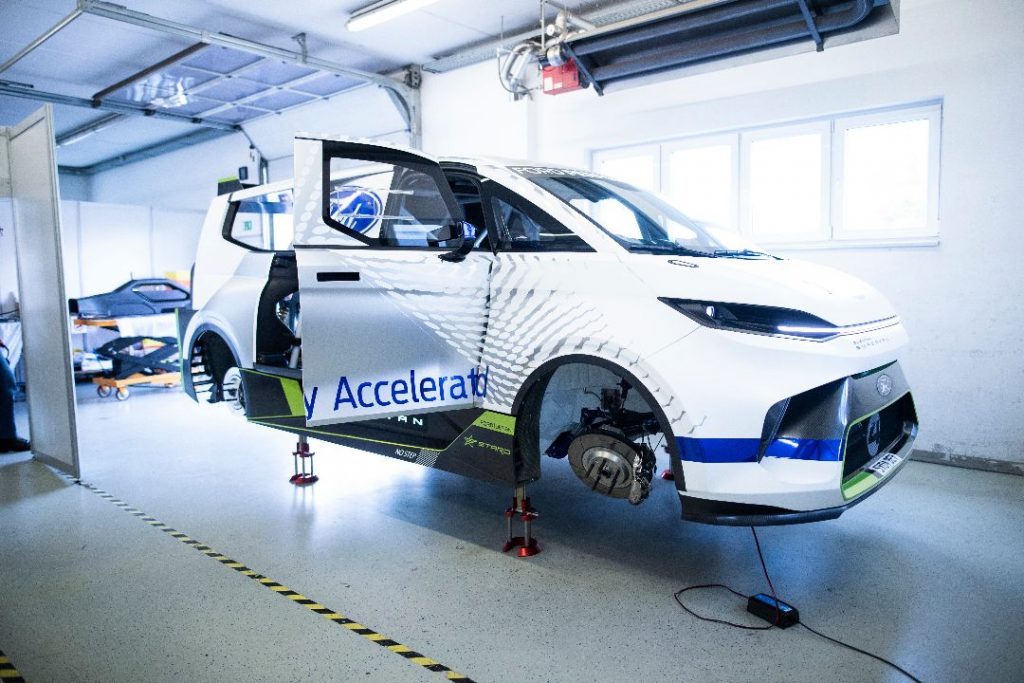
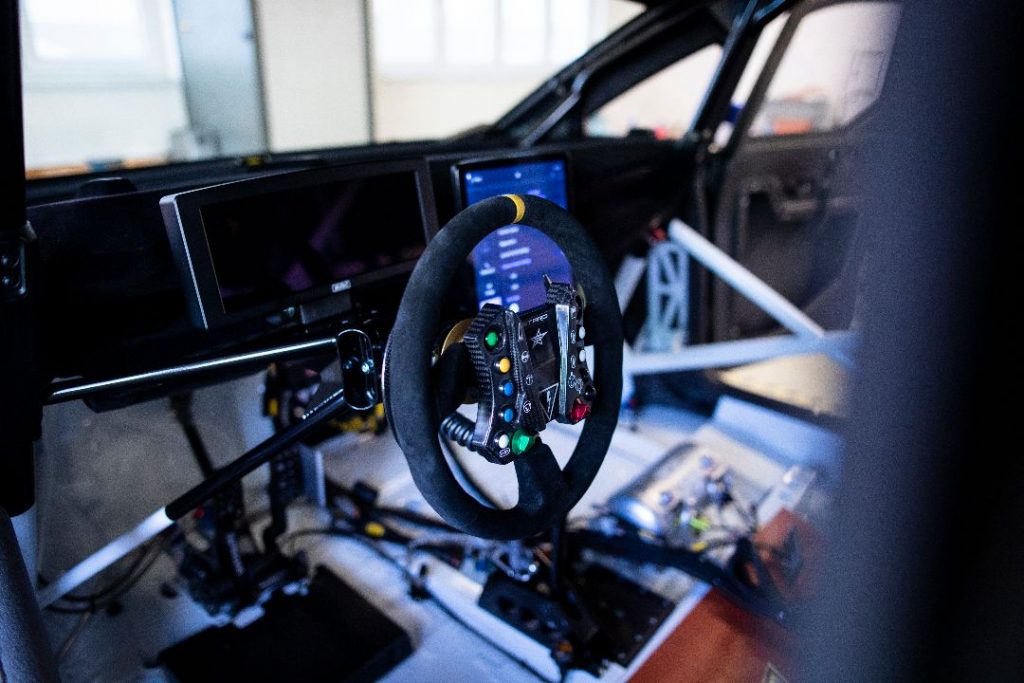
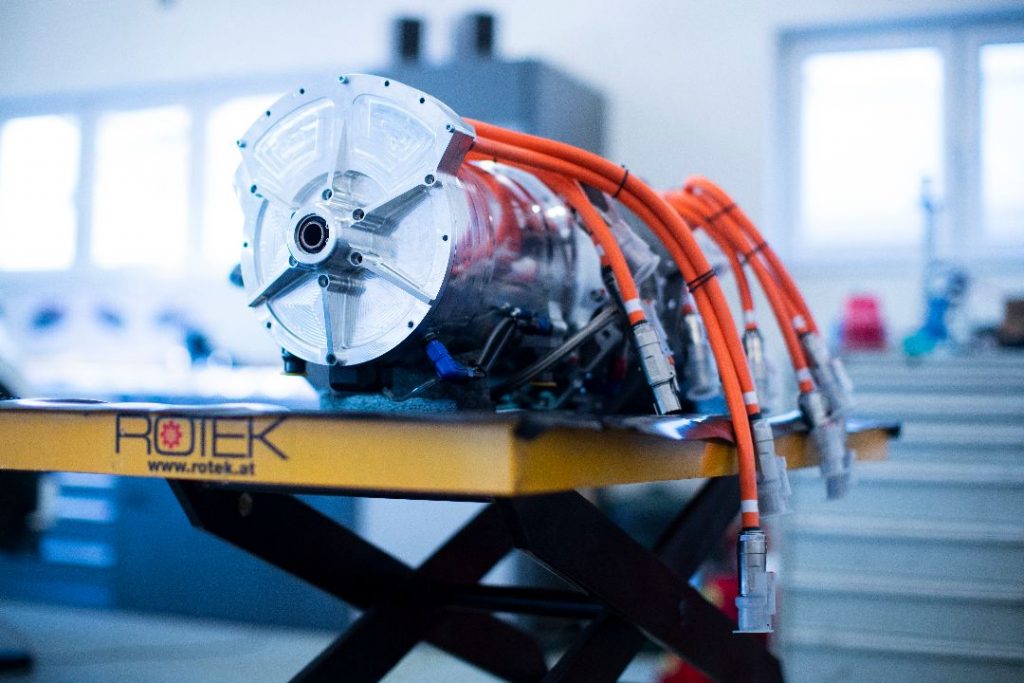
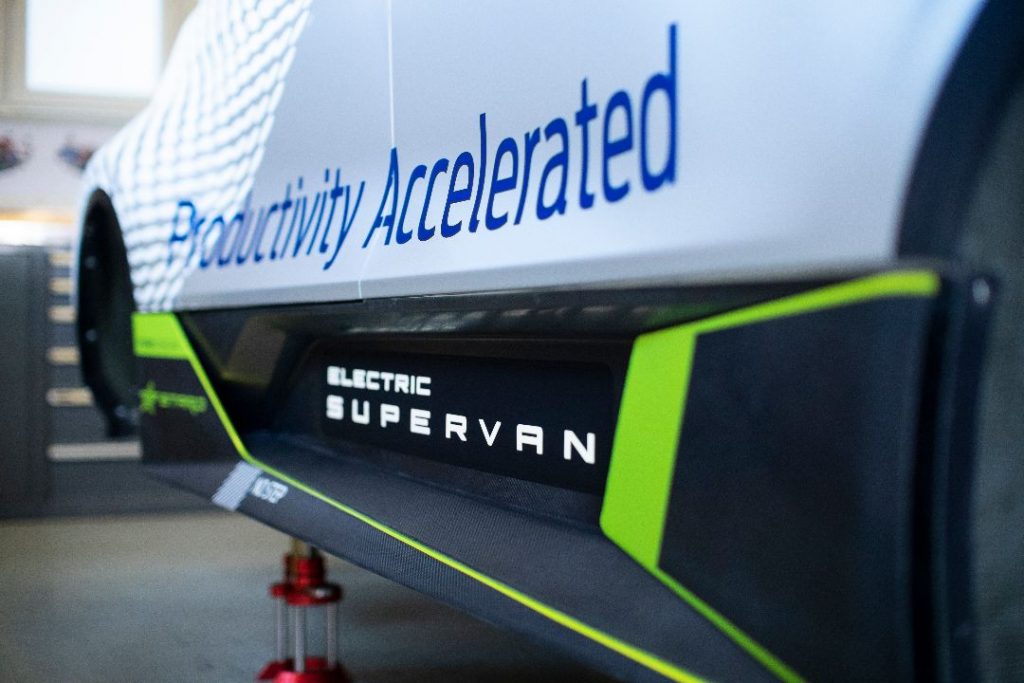
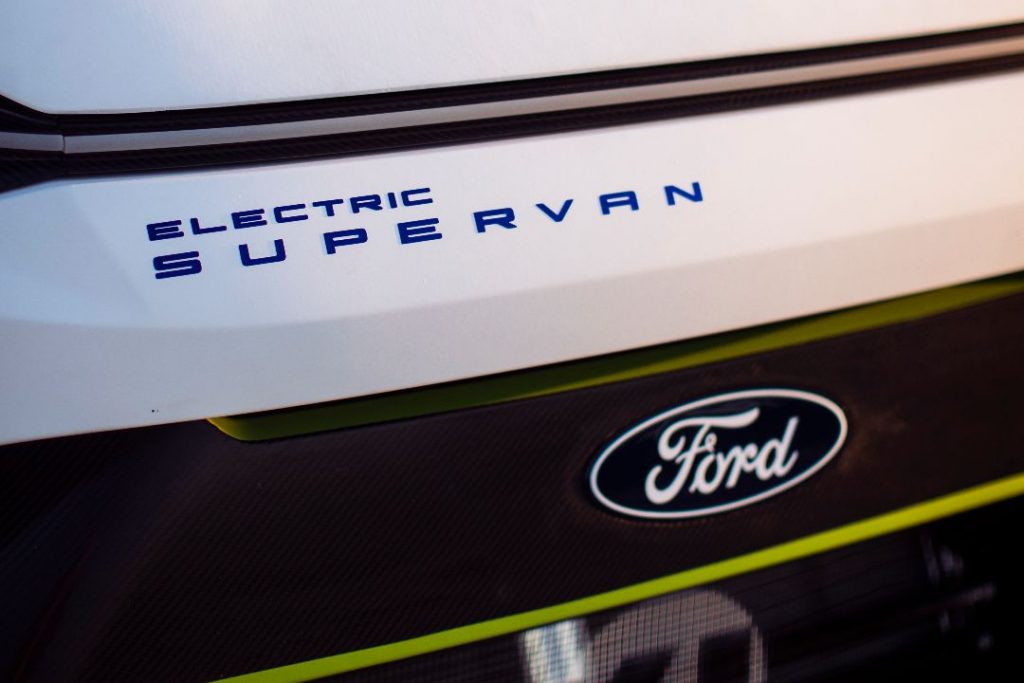
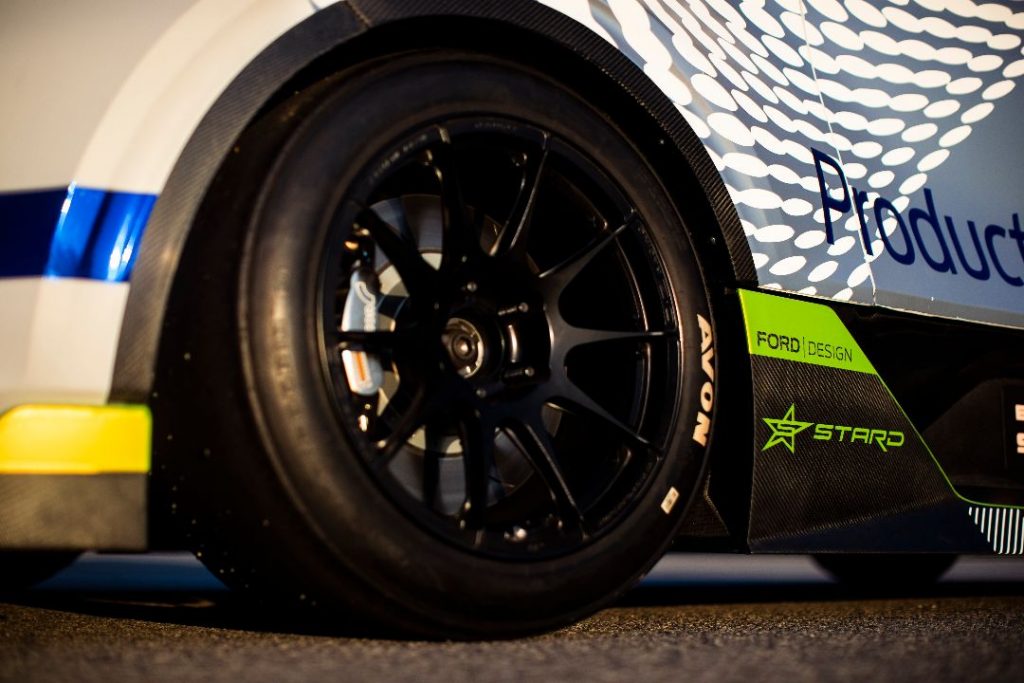
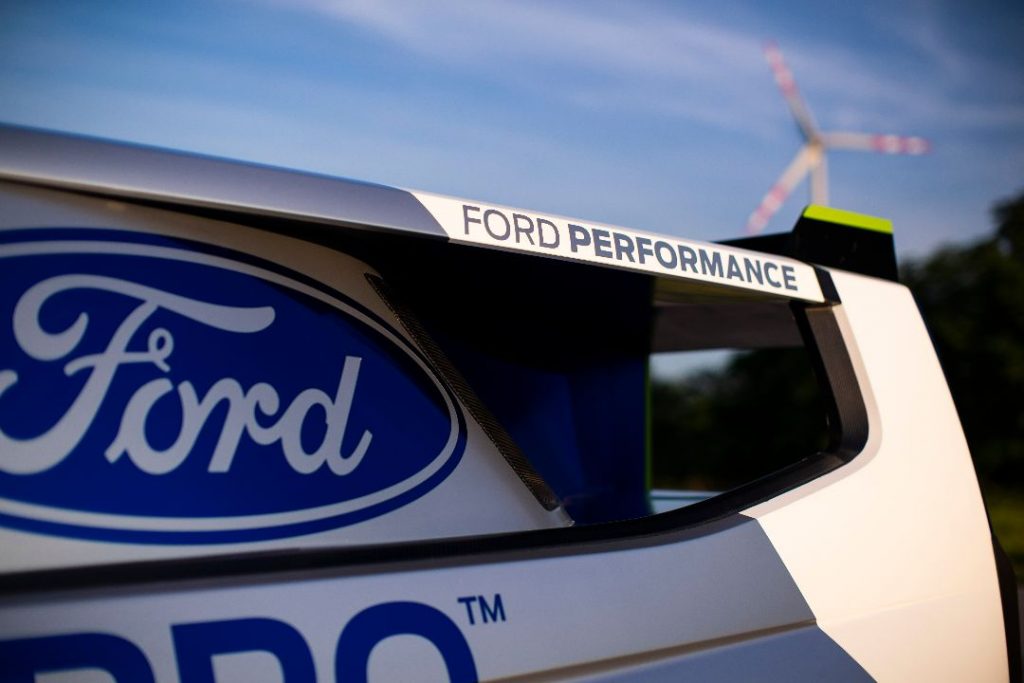
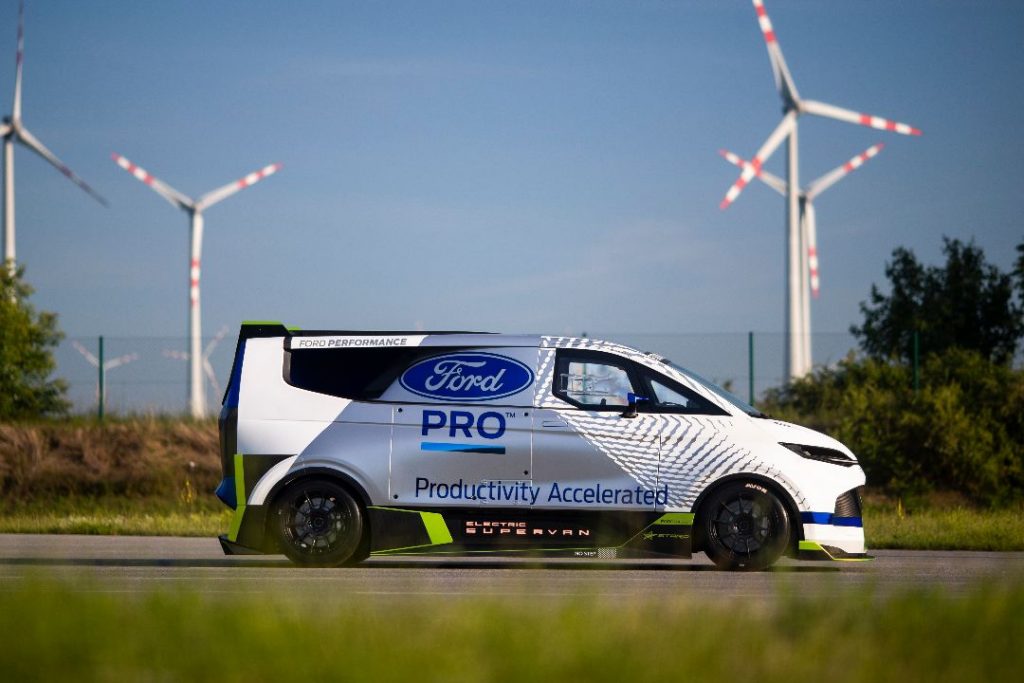
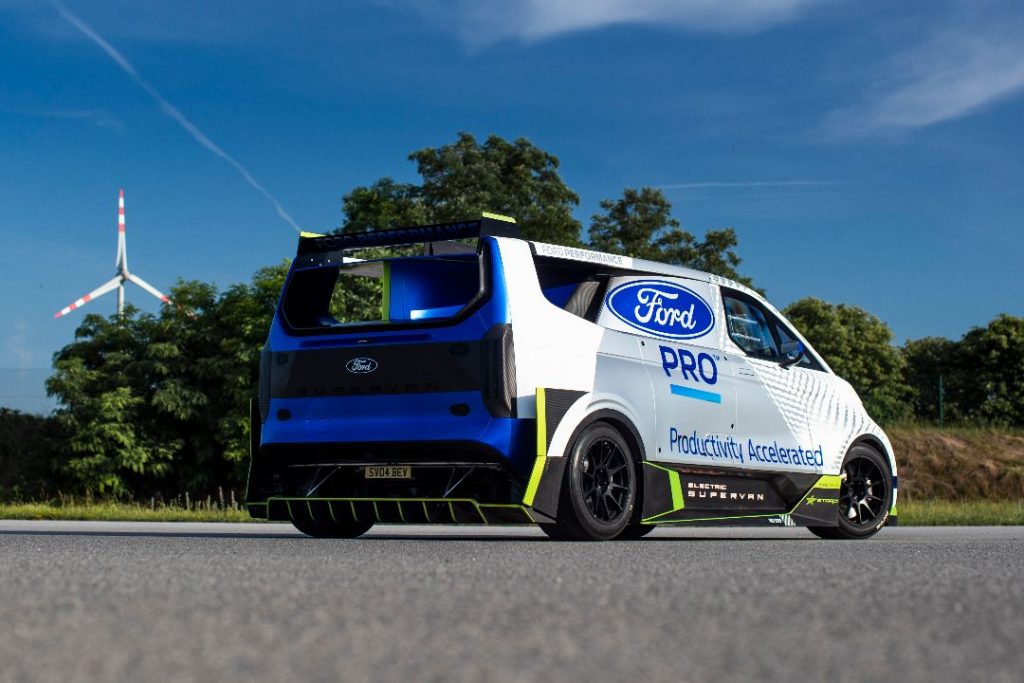
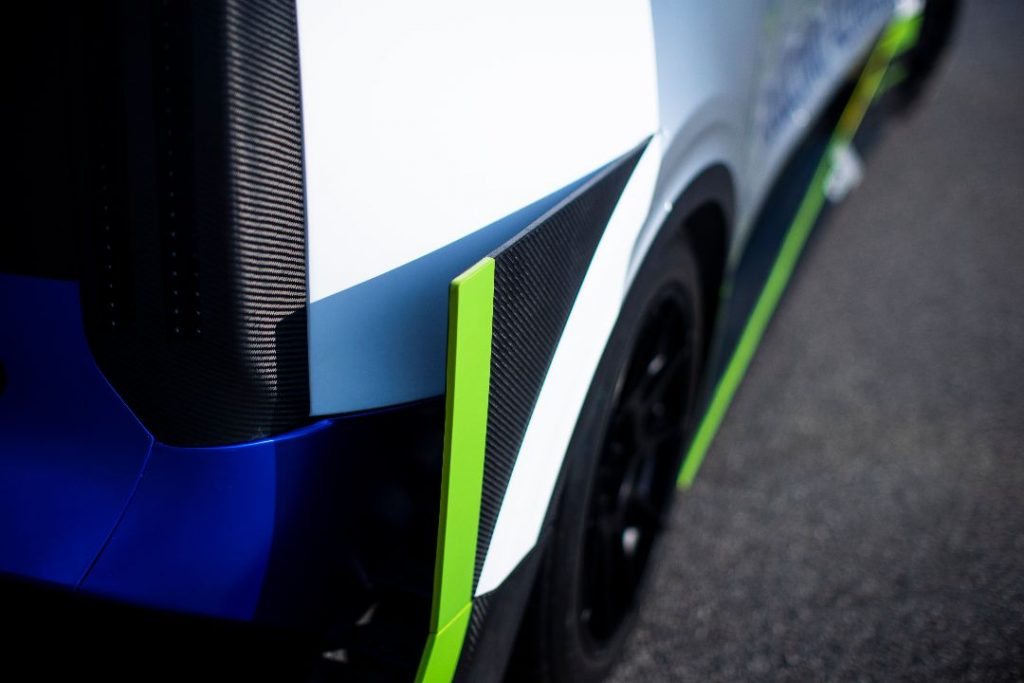


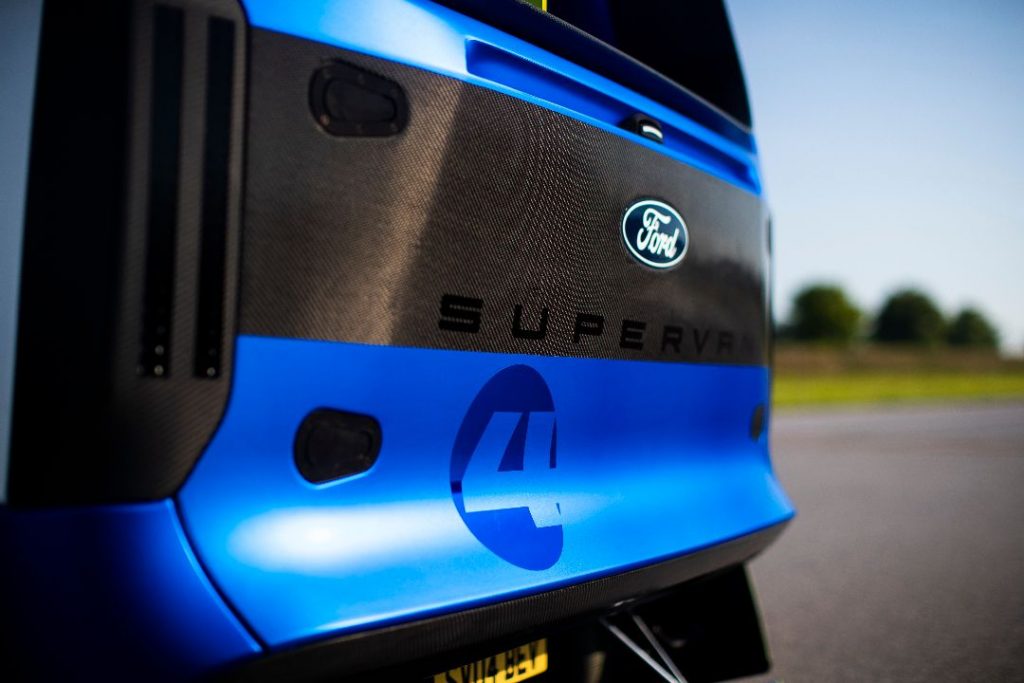
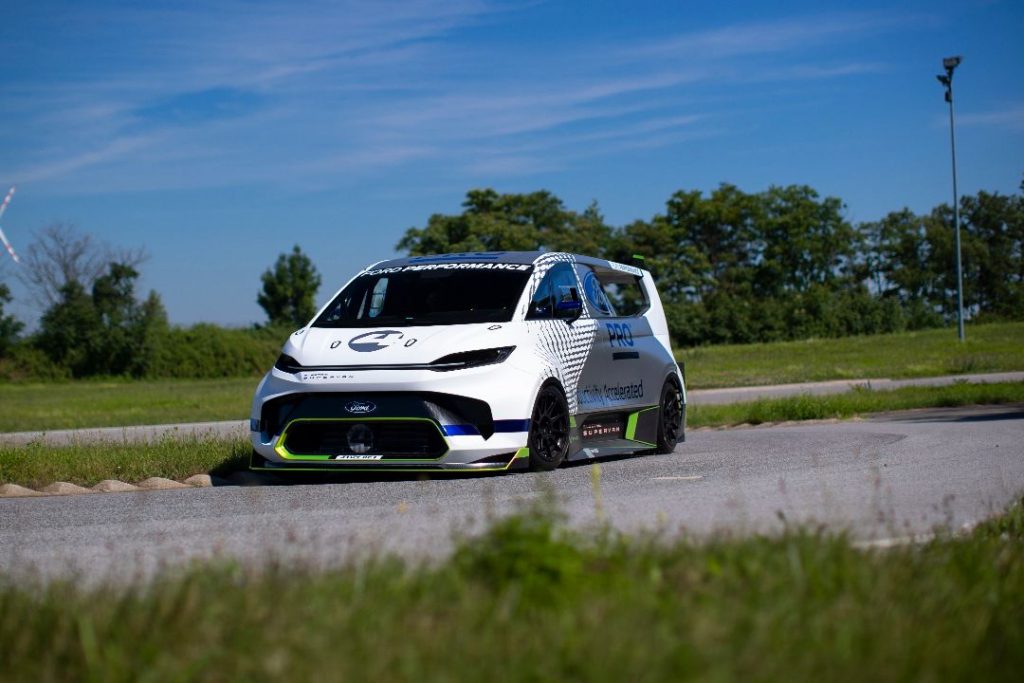
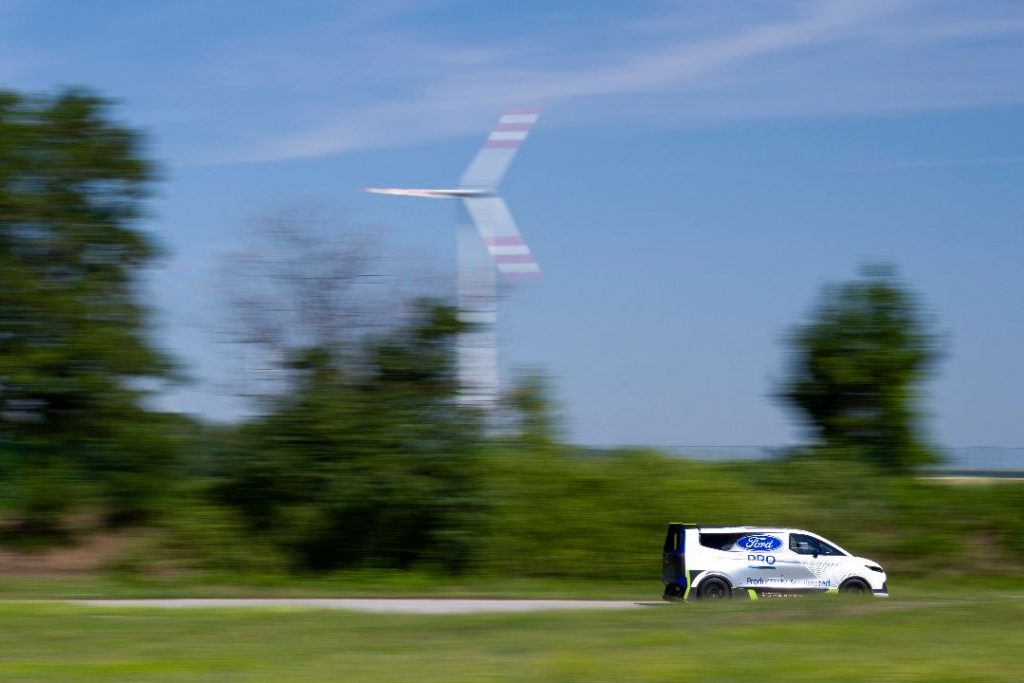
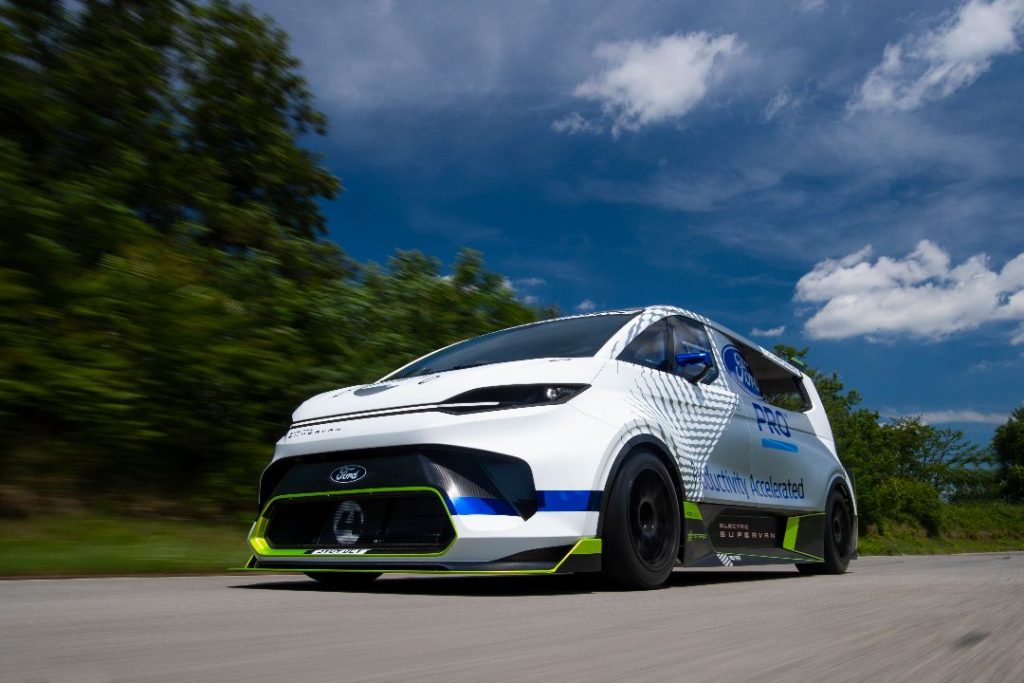
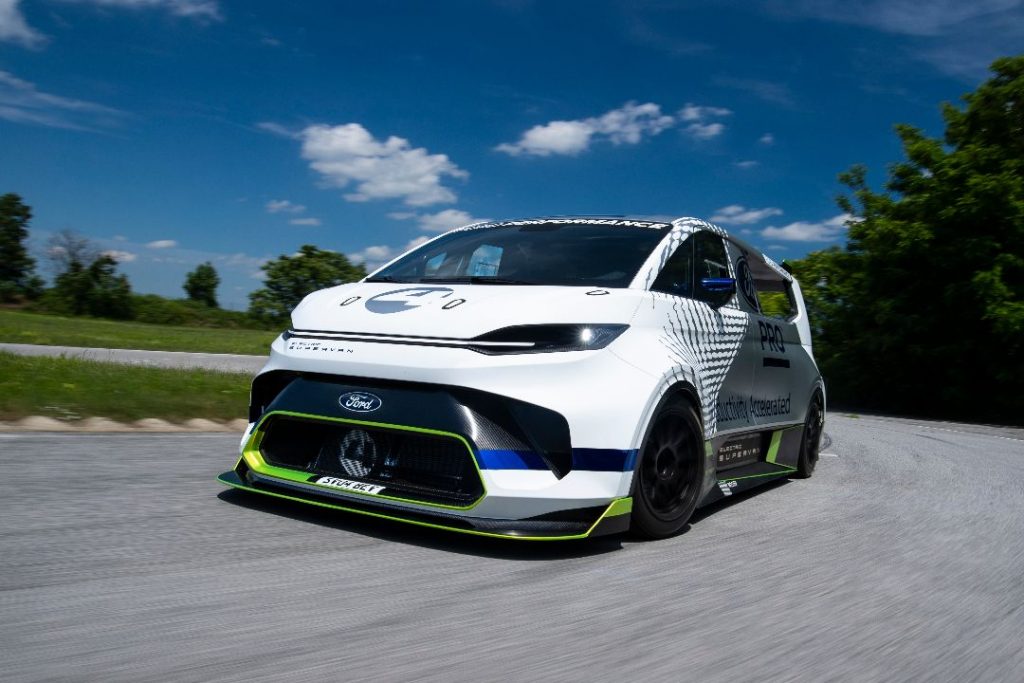
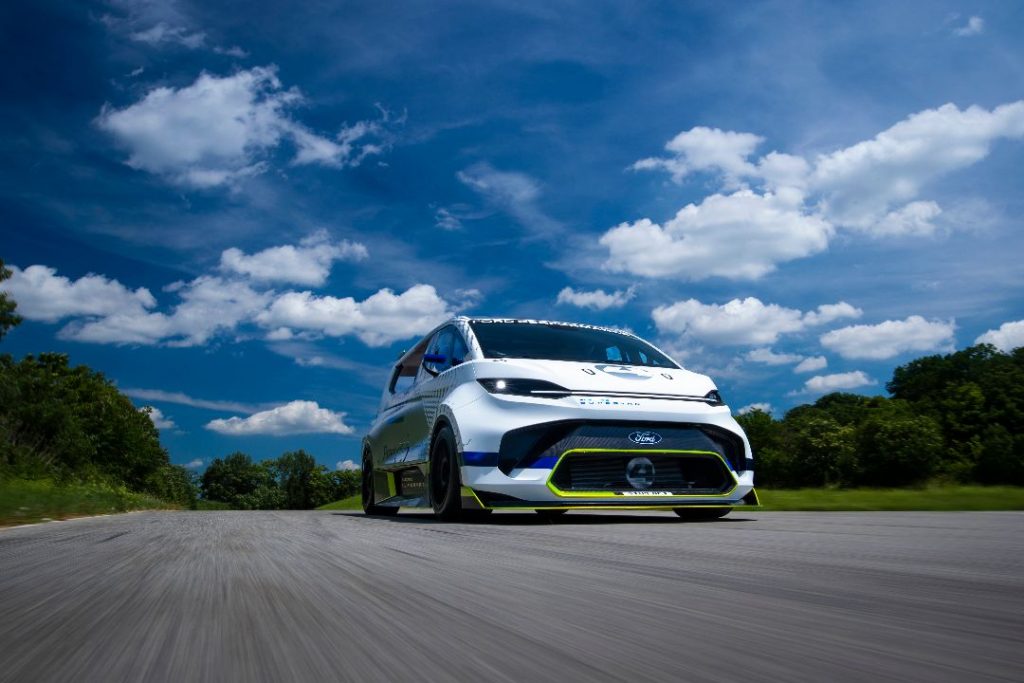
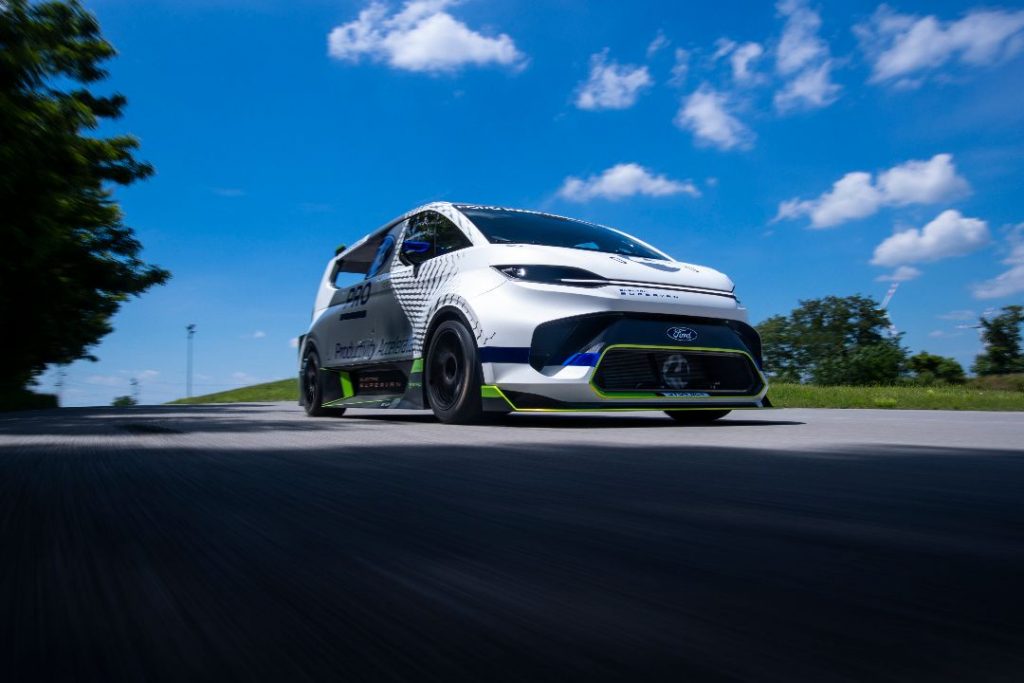
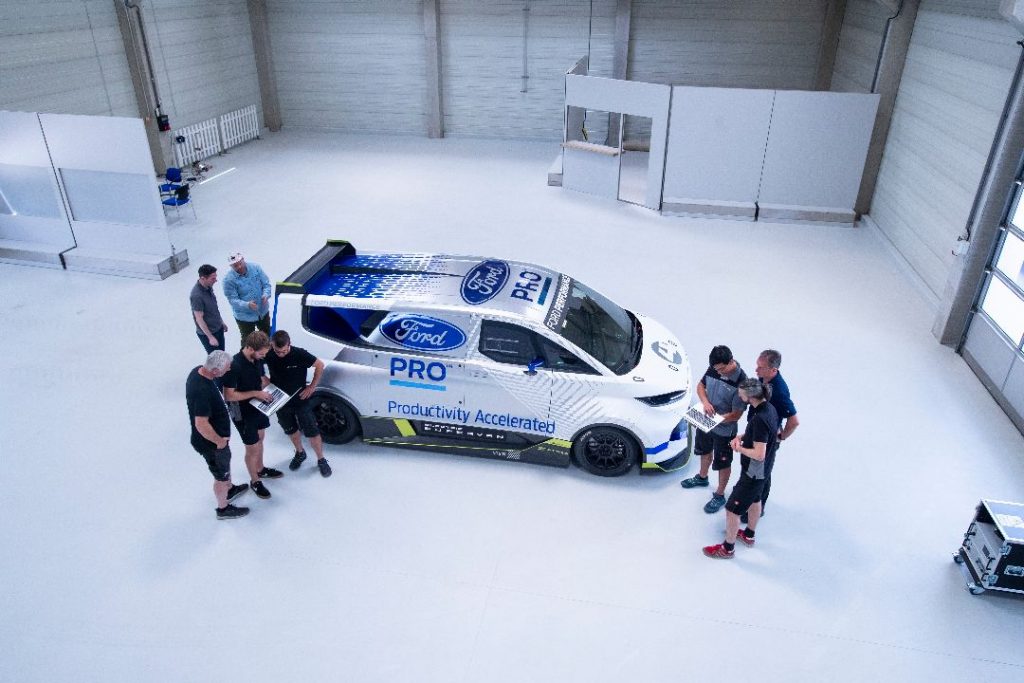
The new electric Ford E-Transit price will be £42,000 when order books open in October.
The E-Transit gets a choice of two different powered motors with either 135kW or 198kW maximum outputs with 430Nm of torque.
It has a 68kWh usable battery capacity as standard that will provide a claimed driving range of up to 197 miles (317km). The range will be made up of 25 different variants with panel van, double-cab and chassis bodies, all of which will be available with multiple lengths and differing roof heights with gross vehicle weights at 3.5 tonnes as well as 4.25 tonnes.
The E-Transit will also have a unique ProPower Onboard feature that gives up to 2.3kW of power via standard plug sockets in the cab and load area. A feature only previously seen on the Nissan eNV200 it will enable drivers to power tools, lights or laptops as well as conversions such as fridge units. The E-Transit battery will apparently take a charge from 15% to 80% in 34 minutes when connected to a 115kW DC rapid charger while an complete overnight charge from a standard 230-volt AC supply will take around eight hours.
The Ford E-Transit will go on trial with a number of operators across Europe ahead of its launch in spring 2022. Customers include Balfour Beaty, DPD and Ocado.
See more Electric Van Reviews
E-Transit will be available in two trim levels when it goes on sale with Base and Trend options that exceed the equipment levels on the equivalent diesel model.
Base series vans will get Electronic Air Temperature Control, SYNC 4 with 12in touchscreen, 4 Keyless Start, heated seats, Quickclear windscreen and heated electric mirrors all fitted as standard. There is also always-on connectivity with the FordPass Connect modem, as well as a lifetime subscription to FordPass Pro 6 or Ford Telematics Essentials.
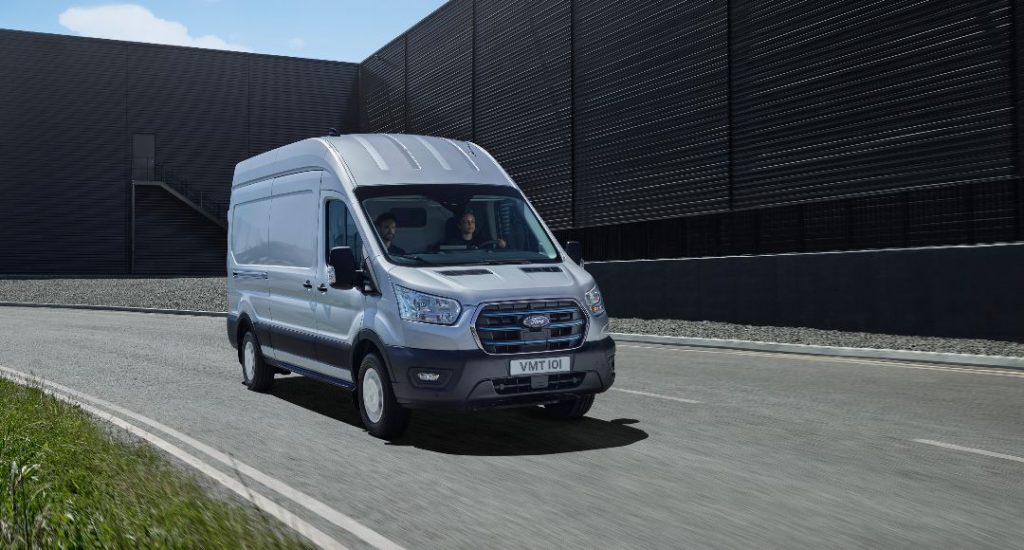
The Ford E-Transit is to begin fleet trails in the UK and Europe with some of the biggest names in home delivery and construction.
Trails of the electric Transit van will begin in spring 2022 with fleet operators in the postal, municipal and utilities, last mile and grocery delivery sectors all using the vehicle in their real world operations.
Germany, Norway and the UK will play host to a complete range of E-Transit models from panel vans, double cabs and chassis cabs with names such as Balfour Beatty, DHL Express in the UK, DPD and Ocado taking part. Also trailing the vans will be Recover Nordic, AWB waste disposal, the City of Cologne and Norwegian Post.
Read: Ford E-Transit review
In keeping with the sort of work they are to be doing, a number of the trial vehicles have been converted. Ford-approved Qualified Vehicle Modifiers have added refrigerated, dropside and caged tipper bodies.
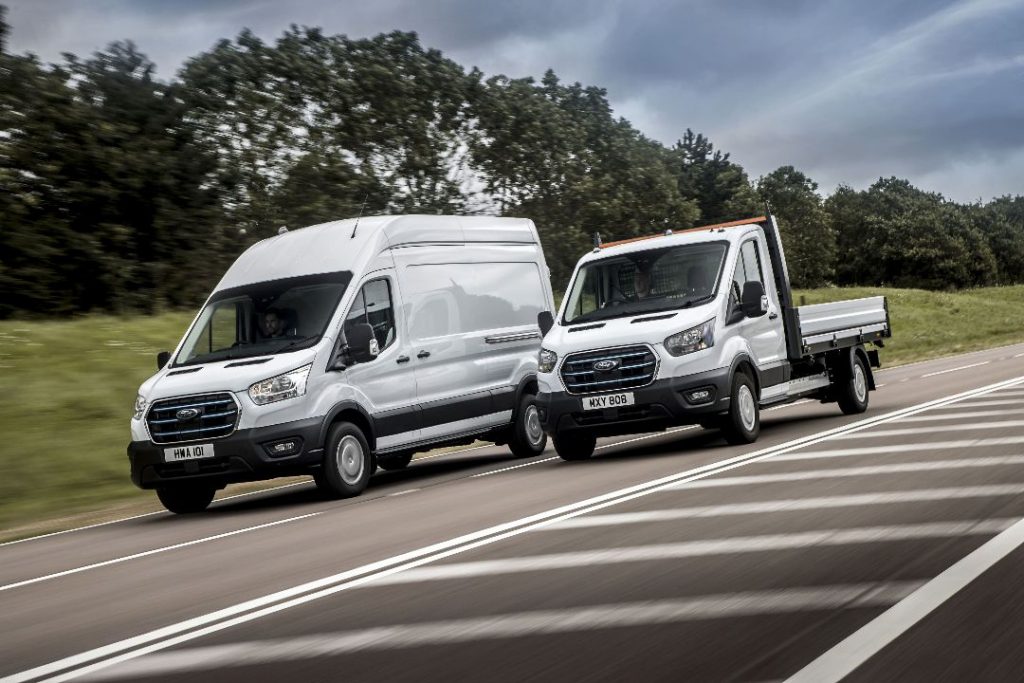
The latest Ford E-Transit fleet trail comes off the back of successful trials with the Ford Transit Custom Plug-In Hybrid which was tested extensively by existing Ford fleets, covering more than 150,000 miles and operating in zero-emission mode for 75% of their time while in central London.
Read more electric van reviews
“We want to demonstrate that helping customers reduce their environmental impact can go hand-in-hand with improving their productivity,” said Dave Petts, market lead, urban electrified vans, Ford of Europe. “Real-world mileage in customer hands helps us to show the business benefits that E-Transit can deliver, as well as providing valuable feedback on usage patterns and charging behaviour so that we can refine the operating experience. We firmly believe in treating our customers like family, and this programme highlights the value we place on those close partnerships.”
The E-Transit prototypes will be in the field for six to 12 months with each of the customers.
The arrival of the electric Transit van is part of Ford’s overall plans to electrify its entire vehicle range. The Ford E-Transit will be the first fully electric commercial vehicle in the Ford line-up when it goes on sale in 2023.
